Happy New Year Worthy Brothers and Sisters!
I appreciate your readership and support of my passion in S&C.
May the New Year bring you strength and resiliency.
John Parker
I have been called to experiment with the tactics of my strength & conditioning. Employing a bar, bands, and a footplate, I will test variable resistance training (VRT) for strength and hypertrophy using minimum effective dose (MED) strategies.
This test is driven by alternating push/pull workouts done 3x each/week. Each movement will be performed to (near) failure on a 2-1-2-1 tempo. Progressive overload is realized through weekly repetition PRs and hypertrophy-focused waving volume.
Why VRT?
Training with VRT offers myriad benefits; brief session length (>15 min), positive endocrine development (higher testosterone + growth hormone), a relief in joint compression/stiffness, and an alternative method of developing strength attributes.
VRT may serve as a substitute for time-deprived persons, those with chronic injuries, and athletes needing a novel training stimulus. December is my respite and much-needed hiatus from heavy lifting. Is VRT a worthy modality? Let’s discover its merits.
John Parker
December 31, 2024
December 22, 2024 - “Medium Volume” Push Training Session. I brought my X3 Bar during a three night stay in Bishop, CA. In the mornings we made the 40 minute drive to Mammoth Mountain for Snowboarding/Skiing. Après-ski, I performed my scheduled training session of two sets of five different push exercises.
X3 Ground Plate, X3 Short Bar, X3 41” Elite Orange Band
Variable Resistance Training: The Experiment
Failsafe
When I discovered VRT, I realized this modality could be a standalone MED solution that offered accommodating mechanical tension with a low(er) chance of injury: high-tension bands only allow the athlete to train with what forces that they can manage.
Since my goal is to train each movement to (near) failure, the amount of force produced per movement is based off of my recovery and day’s available energy. This offers a built in failsafe: if the muscles can no longer produce force, the set to over.
In traditional loading methods like step-loading and 1RM percentages,* the athlete might push beyond their limits to achieve the session’s desired volume. Although grit is generally a good thing, injuries typically occur when fatigued and under faulty form.
*In hardstyle kettlebell training, we often use “step-loading" ie; using a certain kettlebell load for an extended period of time before making a jump of 4-8kg to the next kettlebell size. The athlete must practice their lifting groove and add volume or exercise variations, not necessarily intensity, until they can confidently make the 4-8kg jump to a heavier kettlebell. At StrongFirst, courses like PlanStrong and BuiltStrong teach waving volume based off percentages of a 1RM (one repetition maximum) that's been realized or is estimated. Programs based on percentages are the standard loading parameter in weightlifting and powerlifting.
Deadlift with the Elite Orange Band (up to 600lbs of force). When I first tried to lift this band, it wouldn’t budge. As I learned how to apply force through VRT’s unique strength curve, I was able to lift it ~20x. I chose to wear wrist wraps during all of my Deadlift/Shrug/Calf sets so that I could focus on the working muscles instead of competing for grip stamina.
Strategies
For the first two weeks, I will train one set to failure. For the second two weeks, I will employ a Medium/Heavy/Light waving volume template. The exercises will remain constant but during higher volume sets, I will reserve reps and take 2:00 rest periods.
Knowing that the repetitions just short of failure are typically when an athlete realizes their maximal muscle fiber recruitment, I will use a medium pace tempo at 2-1-2-1 (two count concentric, one count pause, two count eccentric, one count pause).
I will evaluate two distinct range of motions (ROM) in respective halves of the experiment: in between middle/lockout, and full ROM. Both strategies test time under tension (TUT): the former is oriented to failure, the latter to Reps in Reserve (RIR).**
** Reps in Reserve (RIR) is a method of assigning a specific sub-maximal volume to a lift in a strength training program. The athlete intentionally performs fewer repetitions than they are capable of performing during one perfect set to failure. This allows them to save energy to ensure perfect form can be maintained throughout the main sets of the movement.
If I can perform a Double Kettlebell Military Press with 2x40kg for five total repetitions, but I need to perform 10 NL (number of lifts) in my training session. I have two options: Two very hard sets of 5 MPs, or use a (-2) RIR.^ Psychologically, performing sets of 3 (which is 2 less than my max) moderately challenging MP reps vs 5 very difficult MP reps is a better choice.
To get to my desired 10 NL, I would perform 3/3 (1) repetitions (3 sets of 3 reps plus 1 extra rep = 4 total sets). Think of how challenging two sets of five repetitions with 2x40kg would be... A (-2) RIR is the best strategy for achieving the desired volume while saving my psychological ramping for when it’s needed (at planned and unplanned times).
^Using an RIR in strength training is easily facilitated through the use of Ladders which are in common use in StrengthAxis Program Design and StrongFirst programs.
In VRT, force is amplified by progressive lengthening of the band.
Respite
I have given my life to S&C. For 26 years, it has been my passion, my profession, and my art. My only mistake is giving too much of my energy to it. I have experienced both highs and lows, but apathy, burnout, and boredom define parts of my experience.
To make my lifestyle and career sustainable, I must regularly alter the dynamics of what I do. Though the absence of kettlebells, barbells, and bodyweight brings an intense craving to express my capabilities, it is vital to take rest and recover my spirit.
After each training respite during the past five years, I have returned to S&C with renewed purpose. To better serve myself and my clients, exploring VRT in a strength/hypertrophy training format will stoke the flame of creation and longevity.
Clench Footplate, Clench Nexus Bar, 41” X3 Light Gray (Single) Band - Biceps Curl. Although the X3 Program recommends using max repetitions with diminishing ROM during each set, I felt more inclined to train within a full ROM and with Reps in Reserve (RIR).
Schedule
Program Design
Although I have certain loading and volume parameters listed in the tables above, I did not hold myself to completing these intensities and repetition goals. During each session I checked in with myself to assess energy levels and desire to train. On most days, I hit the specified numbers. On some days, I used a (-2 to -3) RIR.
I enjoyed performing regular lower leg training during VRT December (Calf Raises on Pull Day, Seated Calf Raises on Push Day). I perform calf exercises more for function than aesthetics.
Experiment Hypothesis
Strength via Repetitions PRs on Each VRT movement
Aesthetics: Improved Muscle Mass + Reduced Body Fat
Measured via before/after photos and bodyweight throughout December.
Reduced Joint Compression in Lower Back and Shoulders
In VRT, athletes may induce progressive overload through an increase in volume rather than layering heavier bands (which is also an option). This is the built in failsafe. As such, the accommodating volume is specifically loaded to my unique strength and energy levels for that session.
Experiment Goals
Minimum Effective Dose Program Design & Scheduling
~30 dedicated minutes of training per day.
Improved Body Composition for Health and Athletics
Entering my 40th year, my goals have shifted to longevity. My ideal set point is between 173-180 lbs of bodyweight. This is where I feel the most spry, my strength & conditioning are matched, and I feel the most capable physically.
Since nutrition is 90% of the equation, I am diligently following my own advice in Nutrition: minimum effective dose eating, food is fuel (not entertainment), Hara Hachi Bu, no snacking, and simplicity honor adherence.
Reinvigoration
I’ve thoroughly explored the main avenues within S&C. Blazing new trails into worthy training modalities enlivens my spirit as an athlete and coach.
VRT Use Case
Standalone Tool for Strength and Hypertrophy
MED solution, brief training times, great for travel.
Use in Compound Superset
Heavy+Slow compound movement (barbell) + Medium/Fast compound movement (VRT System) = maximized recruitment of type II muscle fibers.
Strength Rehabilitation/Prehabilitation
VRT’s limited ROM assists prehabilitation and rehabilitation efforts.
Week 1
Chest Press - X3 Ground Plate, X3 Short Bar, X3 41” Orange Band
Deadlift - X3 Ground Plate, X3 Short Bar, X3 41” Black + White Band
Commentary
During Week 1, I experimented with combinations of bands to determine my ideal strength output. After several trial runs, decided on the singular band tension that I would use for each movement in the four week experiment.
Author's Note: Brevity.
With a busy training schedule, I prefer to dedicate only one hour per day to movement: warm up, training, cool down, shower, change, and eat (that only leaves about 30 minutes of training). VRT allowed me to feel accomplished with my training in minimal time - big win!I found it challenging to perform only one set to failure while practicing a diminishing ROM. I prefer to train in a complete ROM (for muscle length/balance benefits) and with maximum control over the direction of the load.
Equipment
Kit: X3 Ground Plate, X3 Short Bar, X3 41” Bands
The X3 Ground Plate is unimpressive. When deadlifting the Elite Orange Band, I felt like the it would crack under the 500-600lb of pressure produced. I am unsure of why X3 made the baseplate so narrow (unless it’s targeted solely for travel purposes).
Like the ground plate, the X3 Short Bar’s dimensions are off. Although a beautiful construction, the knurling is slightly too sharp and the length too short. I have a narrower grip on bench and military press than most and I found that the X3 Short Bar required way too narrow of a grip for maximizing individual grip positions.
Even with the shortcomings of the ground plate and short bar, the X3 is well-designed, aesthetically pleasing, and great for travel. However, most male athletes will be unable to ensure a balanced press through the tripod of their foot since the Plate’s width is so narrow. I also had to buy 3D printed band protectors to ensure that the bands wouldn’t rip on the sharp corners of the Ground Plate. Within a week of use, I had already noticed fraying.
Week 2
Since I’m such a fan of step-loading, my goal in week two was to match my volume and intensity from week 1 while experimenting with the X3 Long Bar.
Military Press - X3 Ground Plate, X3 Long Bar, X3 41” Light Gray Band (Single)
Upright Row - X3 Ground Plate, X3 Long Bar, X3 41” White Band (Single)
Commentary
During Week 2 I began to enjoy my VRT experience. I continued to refine the groove of each lift and felt more confident in achieving higher repetitions through a diminishing ROM. Not quite sold on only one set to failure, I began postulating that 2-3 sets and RIR would improve the effectiveness of VRT.
Equipment
Kit: X3 Ground Plate, X3 Long Bar, X3 41” Bands
I ordered the X3 Long Bar during Week 1. It arrived in time for me to use it exclusively in Week 2. I found that I could maintain a more natural grip (as compared to an Olympic Barbell) with the X3 Long Bar. This especially helped on the Chest Press, Bent Over Row, Military Press, Deadlift, and Zercher Squat.
X3 Long Bar next to X3 Ground Plate and 41” X3 Elite Orange Band.
Comparison: 21.5” X3 Short Bar vs 29” X3 Long Bar.
Author’s Notes X3's Month 2 Program Design was my inspiration for VRT December. This program dictates 3x Push + 3x Pull and one day off per week. Even with six consecutive days of training, VRT does not destroy the body and cause excessive soreness/fatigue. The volume feels adequate. X3 recommends performing a Front Squat as their main quadriceps exercise. I found this movement to be cumbersome, ineffective, and not stimulating to my legs as desired. Racking the X3 Bar was uncomfortable while the limited ROM felt unworthy of my desired effort. Instead, I chose the Zercher Squat which is an excellent movement for my body. Until I purchased the X3 Long Bar, then the Clench Nexus Bar, the sharp X3 Short Bar knurling dug into my biceps crook. The longer bars (Both X3 and Nexus Bar) fixed the problem. Even with the Zercher Squat substitution, my quad training still felt inadequate. Beyond regular mountain biking and snowboarding, I felt I could add more knee extension work. So with high hopes, I purchased the X3 Squat Belt made for performing Split Squats. Unfortunately, this was a bad purchase. This Split Squat was even more cumbersome than the Front Squat and was challenging to set up. I decided to eliminate the Split Squat and substituted the seated calf raise for a functional way of training strong plantar flexion. Like in minimalist kettlebell programs, I trust that a high volume and intensity of hip hinging will maintain my hip and leg size more than the recommended Front and Split Squats. Like Kettlebells, it is challenging to load one's legs to their potential without a barbell.
I wanted to love the split squat, but it was a pain in the ass to set up and perform. This was an $80 mistake.
Week 3
The reader can see how I applied RIR with movements like Chest Presses, Deadlifts, Zerchers, and Military Presses.
Zercher Squat - Clench Footplate, X3 Long Bar, X3 41” Light Gray Band
Shrug - Clench Footplate + X3 Long Bar + Serious Steel Fitness 32” Black Band
Commentary
Week 3 was more exciting than the previous two. This is when I employed the Waving Volume Medium/Heavy/Light training sessions. After my first Medium session (two sets of each push/pull movement), I finally felt a bit stiff/sore (telling me that I displayed the right effort). The only downside of performing more sets is that the session lengths were longer: Medium = ~45 min, Heavy = ~60 min, Light = ~30 min.
Equipment
Kit: Clench Footplate, X3 Long Bar, 1” X3 Bands
In Week 3, I introduced the Clench Fitness Footplate. This platform is much burlier than the X3 counterpart. I absolutely loved the addition. Not only did it allow me a more natural stance on Zercher Squats and Deadlifts, but could also be used for ground-based movements like a Floor Press and EZ Bar Skullcrushers.
The Clench Footplate also has more loading options through channels under the base. The athlete can attach bands for unilateral and bilateral movements, effectively allowing a plethora of movements to be performed. Further, the Clench Footplate is a beautiful polymer design that doesn’t feel cheap like the X3 Ground Plate.
I was so impressed by Clench Fitness’s offerings that I ordered their Nexus Bar. It has a more traditional feel to an Olympic Bar in respect to its dimensions and knurling. This bar also allows one to load an additional 200lbs onto the bar. This would be advantageous in achieving the standard Olympic Barbell height when performing movements like Deadlifts. Although I have no need to load the bar with additional load beyond the force of the bands, I loved using it in the second half of Week 3.
The Clench Footplate has ideal dimensions for my Zercher Squat stance and allows the addition of ground-based movements like Floor Presses and Skullcrushers.
https://clenchfitness.com/collections/featured/products/clench-footplate
Week 4
Pec Crossover - Serious Steel Fitness 32” Blue Band
Bent Over Row (Supinated) - Clench Footplate, Clench Nexus Bar, X3 41” Light Gray Band
Commentary
In the final week of VRT December, I was confident in maximizing each movement’s hypertrophy potential. My body felt primed to push and pull: I felt strong, nimble, and ready to go. Even though things were going great, I had an intense craving to get back to heavy lifting. Absence makes the heart grow fonder.
Still, I finished the six workout week in my Waving Volume Heavy/Medium/Light loading. With my own five weeks of data, I had also been testing my travel kit X3 Bar with many of my clients. For these men, I would perform compound supersets ie; bench press right into X3 Chest Press burnouts. All of my clients loved the approach.
With my own experience and testing it with my clients, my original Use Case Hypothesis remained validated: VRT is best used as a burnout tool at the end of a training session or as apart of a compound superset. The synergy of VRT and traditional strength training tools creates great potential.
Equipment
In Week 4, I used the Clench Fitness Footplate and Nexus Bar exclusively. I kept the X3 41” bands constant throughout the experiment and felt that they moved the smooth with the addition of the Clench products.
Clench Footplate, Clench Nexus Bar, 41” X3 Orange Elite Band.
Clench’s carabiners are a great design that can accommodate 4” bands.
On December 20, 2024, Clench also marketed their Carbon Bar for preorder (which I bought and is currently being fulfilled). The Clench Carbon Bar fits the dimensions of their footplate perfectly and is of similar size to the X3 Long Bar. Because it’s made of carbon fiber, the bar weighs less than 2lbs. This is important so the athlete feels like they’re only lifting the bands, not additional load (like what can happen if using a heavier bar like the Nexus Bar or attaching band hooks to an EZ Bar which I tried for curls, triceps, and rows).
https://clenchfitness.com/products/clench-carbon-bar
X3 should have included the Long Bar with the purchase of their system instead of charging $250+ for it. The main disadvantage in all of these systems is the extreme price tag. For the money I spend on all of these products, I could have purchased a few sets of RKC Kettlebells that would serve me for a lifetime.
Still, I’m happy with my purchases. I own two X3 Systems (one for my personal use and one for traveling to and from clients) and a Clench Footplate, Nexus Bar, and Carbon Bar (en route). I have two sets of bands from X3 and Serious Steel Bands in 32,” 37,” and 20” deadlift bands.
X3 Short Bar, X3 Long Bar, X3 Ground Plate - beautiful equipment that left this lifter unfulfilled.
Minimum Effective Dose Programming
I programmed a second month of VRT training a few weeks into my experiment. Although my January programming revolves around the Sumo Deadlift, this MED VRT Training is an improved method of strength/hypertrophy with 37”-41” bands.
Who would benefit from an ultra-minimalist program like this? Those short on time, those with limited desire to train, and those looking for MED solutions. In the first table, the athlete would choose a band that allows them to complete the desire volume with perfect form. As with most things in strength training, lifting a load between 70-90% of one’s maximum is a great zone for making progress.
VRT December - Conclusion
After reading Dr. John Jaquish’s book, Weight Lifting is a Waste of Time, I became intrigued about the benefits of variable resistance training. In need of a change from my routine, I adopted VRT as my standalone solution of MED strength training.
This is the synopsis of the positives and negatives I experienced using VRT exclusively. I have included my experiment goals/realizations, body composition metrics, and a detailed account of the equipment I used during the experiment.
Experiment Hypothesis
Strength via Repetitions PRs on Each VRT movement
Goal Achieved. However, I found it better for me to not to train to failure as warranted by the X3 Program. Instead, I maintained a full ROM in each movement and performed Reps in Reserve which better suited my lifting style.
Aesthetics: Improved Muscle Mass + Reduced Body Fat
Goal Achieved. It’s hard to say if the VRT training experiment helped me to build muscle. On one hand, I began performing regular hypertrophy movements 3x/week in contrast to ZERO specific hypertrophy work before. As seen in my “before/after” photos, my body did not go through dramatic change in December. My bodyweight remained relatively constant.
Reduced Joint Compression in Lower Back and Shoulders
Goal Achieved. Since the ROM of the lift that involves the most torque is essentially eliminated using VRT, my joints and body aches subsided during the VRT experiment. But here are a couple of things to note: I continued my stretching/mobility practice daily, I began using the sauna more regularly, and I felt that these workouts were much easier than my norm.
So yes, my body felt great during December. But is that worth it in it’s own right? Maybe. For me, it’s tough to think I’m making progress if I’m not a little stiff in the mornings. It’s not the best marker of a good workout, but it is a marker!
Experiment Goals
Minimum Effective Dose Program Design & Scheduling
Goal Achieved. I loved being in and out of my home gym in 20-30minutes. MED for the win.
Improved Body Composition for Health and Athletics
Goal Achieved. As mentioned above, I did not experience too dramatic of a change in my body composition. However, I am pretty lean overall. I owe this to proper nutrition more than training. At a certain point, training is just something you do. Nutrition is one of those things that you need to continue to work on IMO.
Reinvigoration
Goal Achieved. It was fun to dive into a new S&C topic. My favorites movements were the heavy compounds (listed in order of importance): Deadlift, Chest Press, Military Press, Zercher Squat. My reinvigoration plan worked. About halfway through the experiment, I was jonesing to lift heavy weights. I snuck some lifting n by demonstrating heavy-ish loads for my clients.
VRT Use Case
Standalone Tool for Strength and Hypertrophy
MED solution, brief training times, great for travel.
The potential downside of using VRT exclusively is that the athlete might not make the gains they would with mixed modality training. However, this is always dependent on the athlete’s desire to improve, their training proficiency, diet, lifestyle, etc.
Use in Compound Superset
Heavy+Slow compound movement (barbell) + Medium/Fast compound movement (VRT System) = maximized recruitment of type II muscle fibers.
Personally, I loved training with VRT. As mentioned, I really missed heavier lifting with barbells and kettlebells. I see VRT as a part of compound supersets and used for certain hypertrophy and accessory movements as my best use case in the future
Strength Rehabilitation
VRT’s limited ROM can help athlete’s post-injury recovery time.
I have successfully used VRT movements like the Deadlift with clients who lack heavy free weights. Especially in my older population clientele, a need for high-tension movements to ensure adequate bone density is a primary motivation for regular strength training.
I have been training Martin for 11 years. Martin and I have trained through two total knee replacements, one shoulder replacement, one ankle replacement, and one hip replacement. Martin was an Army Special Forces Officer in Vietnam, played college rugby, has played tennis his whole life, and has regularly lifted since his adolescence. He is approaching 81 years of age with strength, agility, high bone density, and outright grit.
Body Composition
12/01/2024 - Bodyweight: 176lbs
12/15/2024 - Bodyweight: 173lbs
12/29/2024 - Bodyweight: 175lbs
There were no noticeable changes in my body composition throughout this experiment. However, I felt great training VRT. I didn’t experience noticeable soreness and had great energy throughout the month.
I cannot say for certain if this modality will help the athlete to gain muscle and improve body composition (there are too many variables). In my honest opinion, most strength training works when performed consistently. Nutrition is crucial and it should be given an athlete’s A+ effort.
Does VRT Build Muscle?
I do not believe that VRT training builds muscle as easily as traditional strength & hypertrophy training. With free weights, the portion of the lift where the direction of the load is reversed is crucial for improving muscle fiber stimulation for hypertrophy.
In VRT, the weakest part of the lift is omitted (there is no tension on the band at the bottom). Though this allows for less joint compression, maximizing the weakest part of the lift improves neural drive and creates better conditions for hypertrophy.
Though VRT disallows torque from the bottom of the movement, this disadvantage is also an advantage: with less stress on the joints, the athlete is able to focus on stronger lockouts, more forceful band tension, and more repetitions per working set.
Is it Worth It?
I personally recommend VRT as an adjunctive method for hypertrophy training. However, for those interested in an all-in-one and fun-to-use training package, VRT will stimulate metabolic damage for strength & conditioning and hypertrophy.
For experienced athletes, I recommend VRT as a part of compound supersets, burnout sets, and hypertrophy training. For beginners, I recommend VRT training performed as presented in this article with continuous progressive overload parameters instilled.
VRT may lack functionality compared to tactical styles of training like TacFit and StrongFirst ATC. However, VRT earns its merits: one set to failure is extremely challenging, VRT bulletproofs the stabilizers, and helps to build and maintain muscle.
Whether new to training or an experienced athlete, the high price tag of VRT systems are worth the investment. After a month of exclusive use, I realize the quality of construction these brands use in their bars, footplates, and bands. VRT has my vote.
41” X3 Band, 37” Serious Steel Band, 32” Serious Steel Band, 20” Serious Steel Deadlift Band.
Reviewing bands will be a project unto itself! I found the 41” X3 Bands great for VRT December, but realized my unique proportions might prefer 37” bands. I also experimented with the Serious Steel 32” bands for Floor Presses and Skullcrushers and enjoyed the new tension curve of the movement. More to come!
If I had to choose one company’s VRT products it would be Clench Fitness Systems. Their footplate is durable, beautiful, and more functional than X3’s Ground Plate. Their Nexus bar more properly represents Olympic Barbell Dimensions and has a great feel to its grip. Since I pre-ordered the Clench Carbon Bar, I cannot speak to it’s quality yet.
John Parker
December 31, 2024

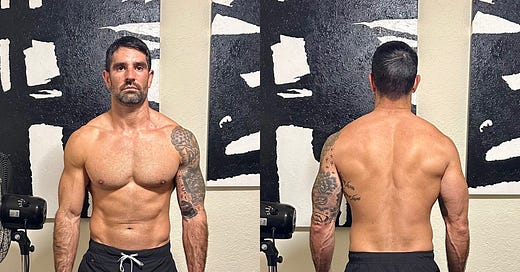


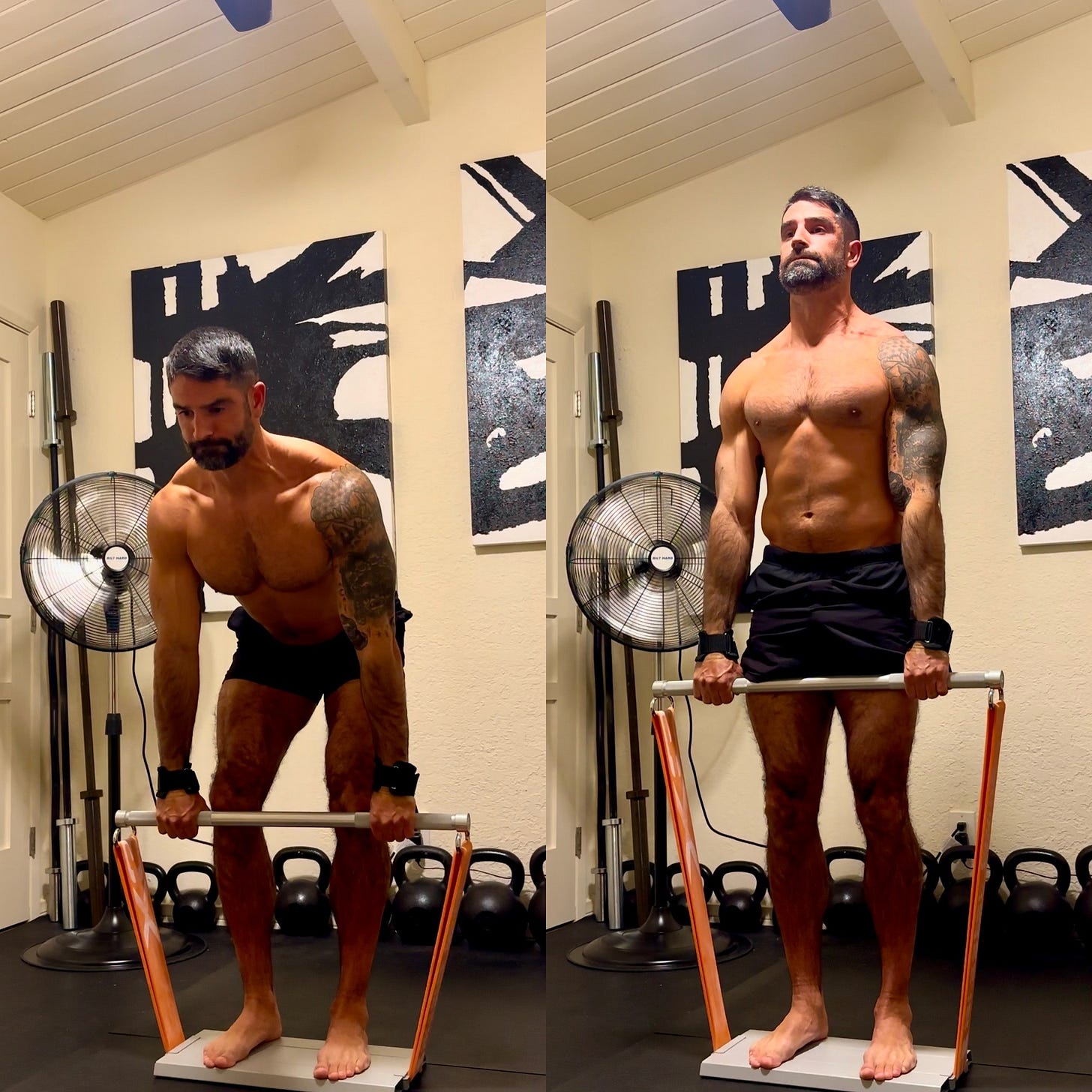
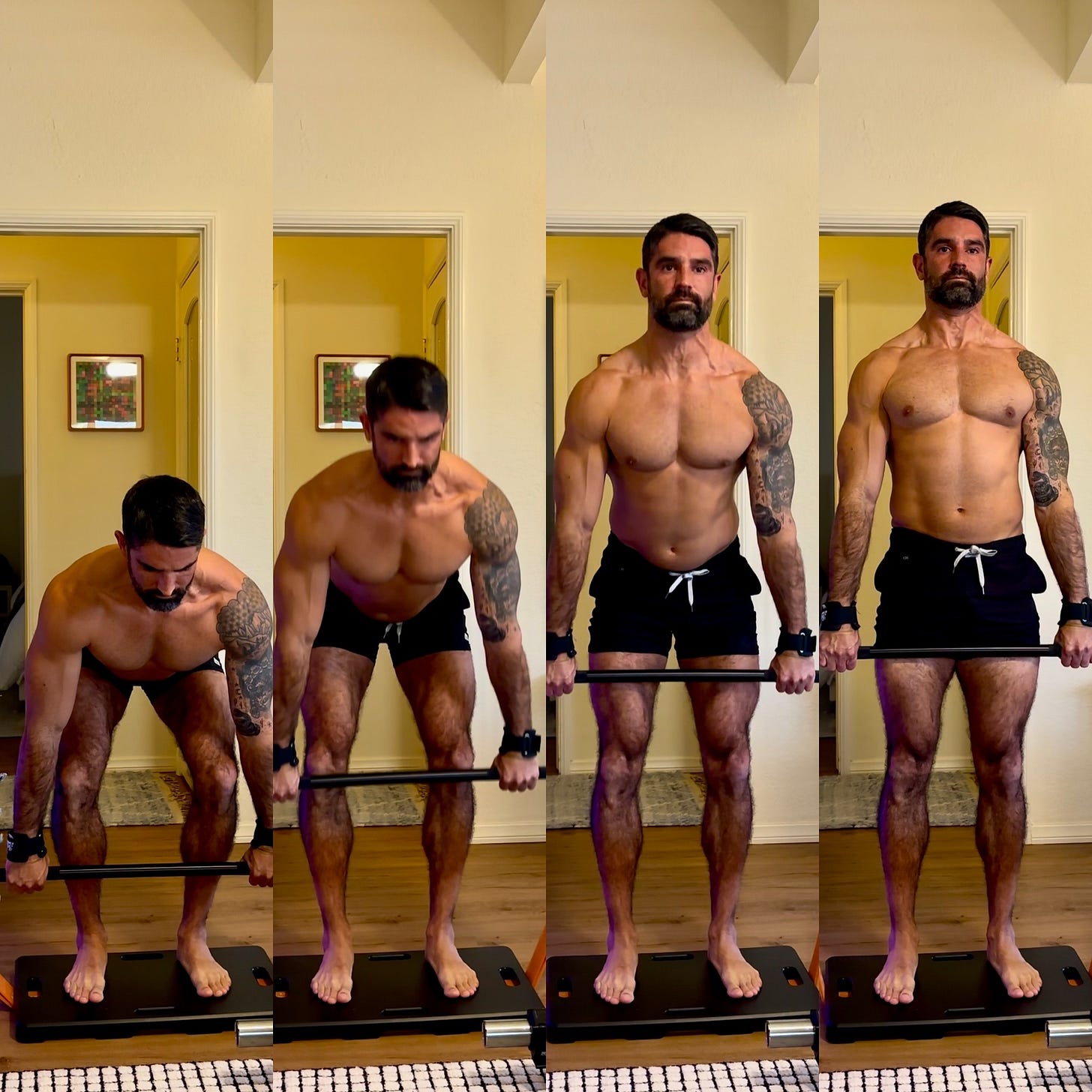
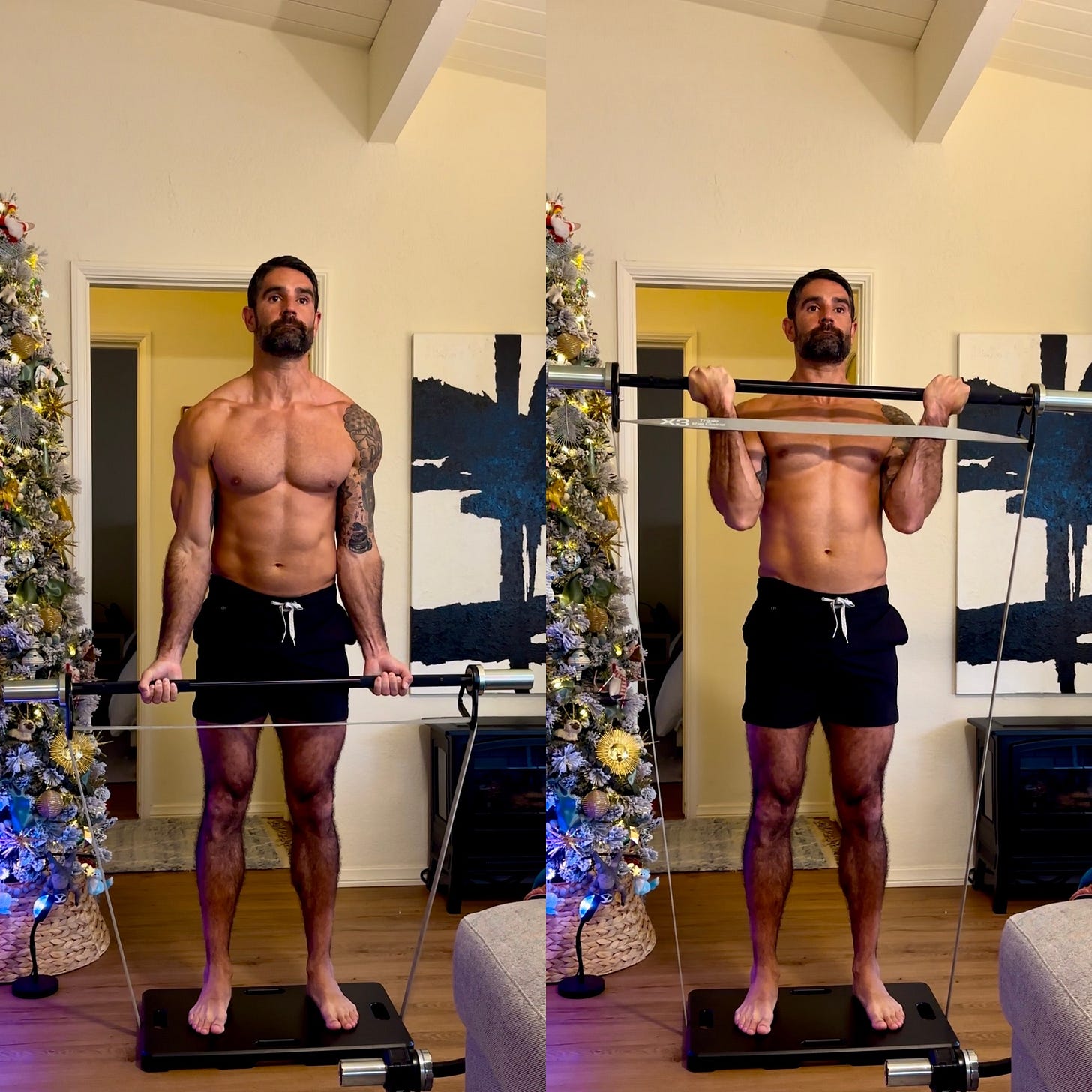




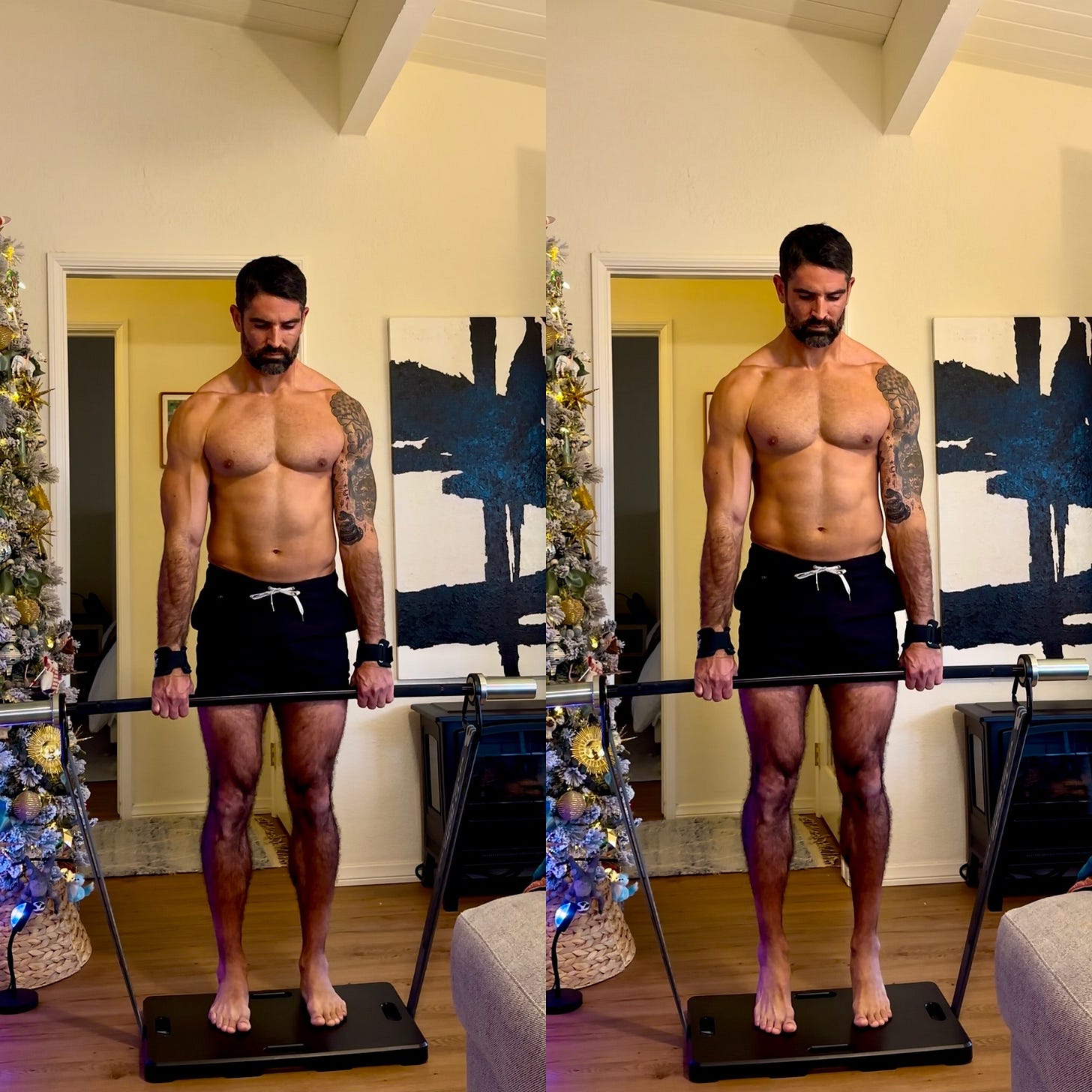

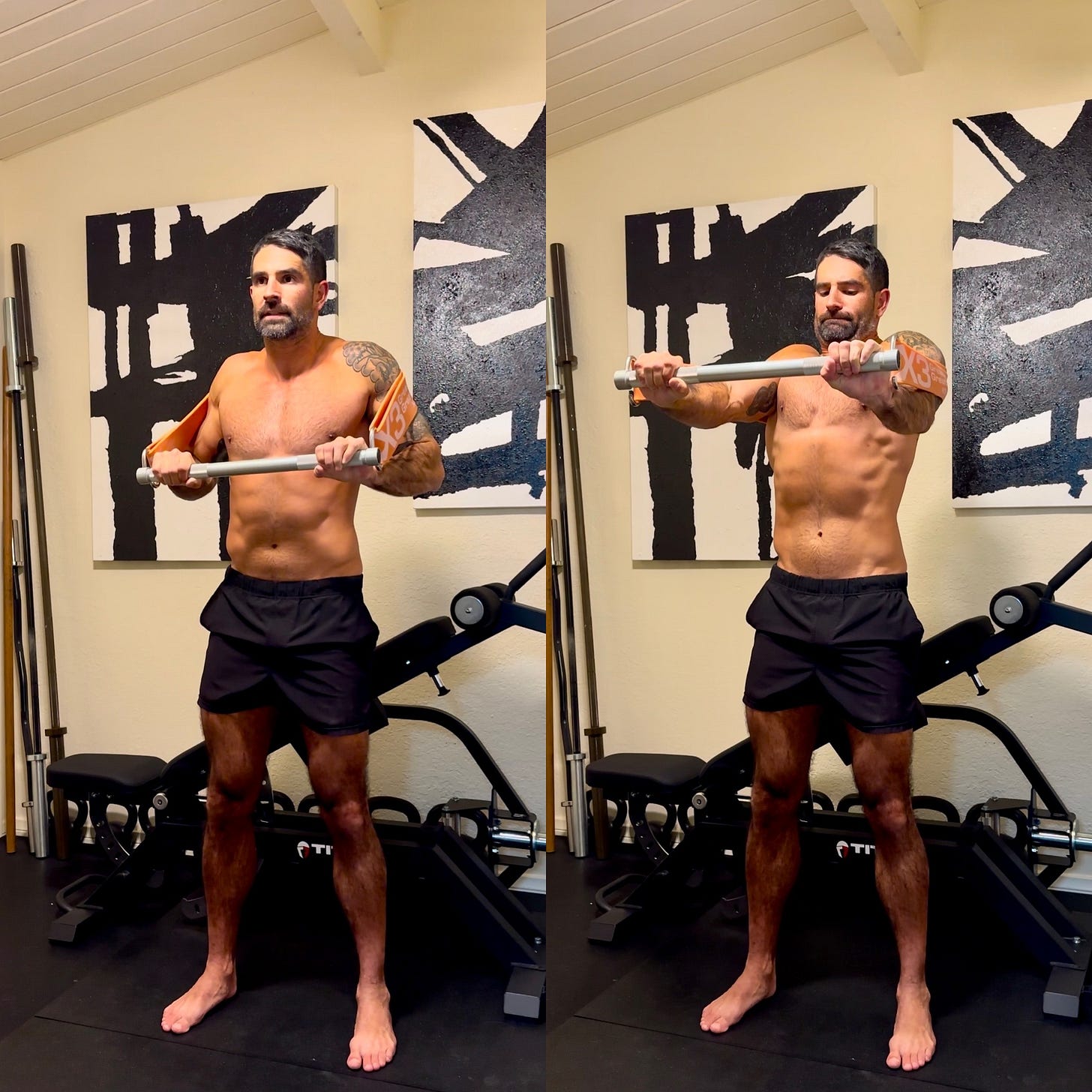
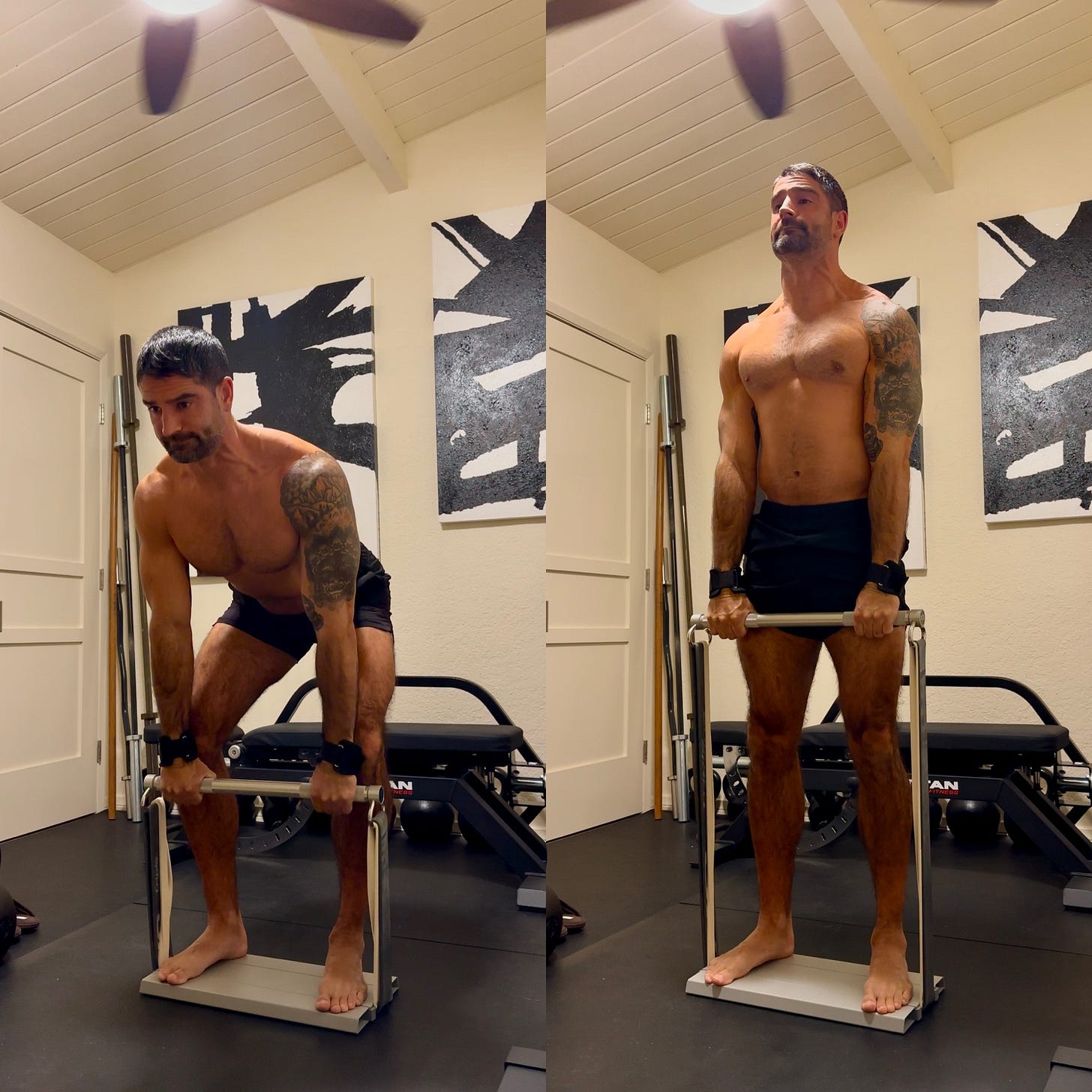
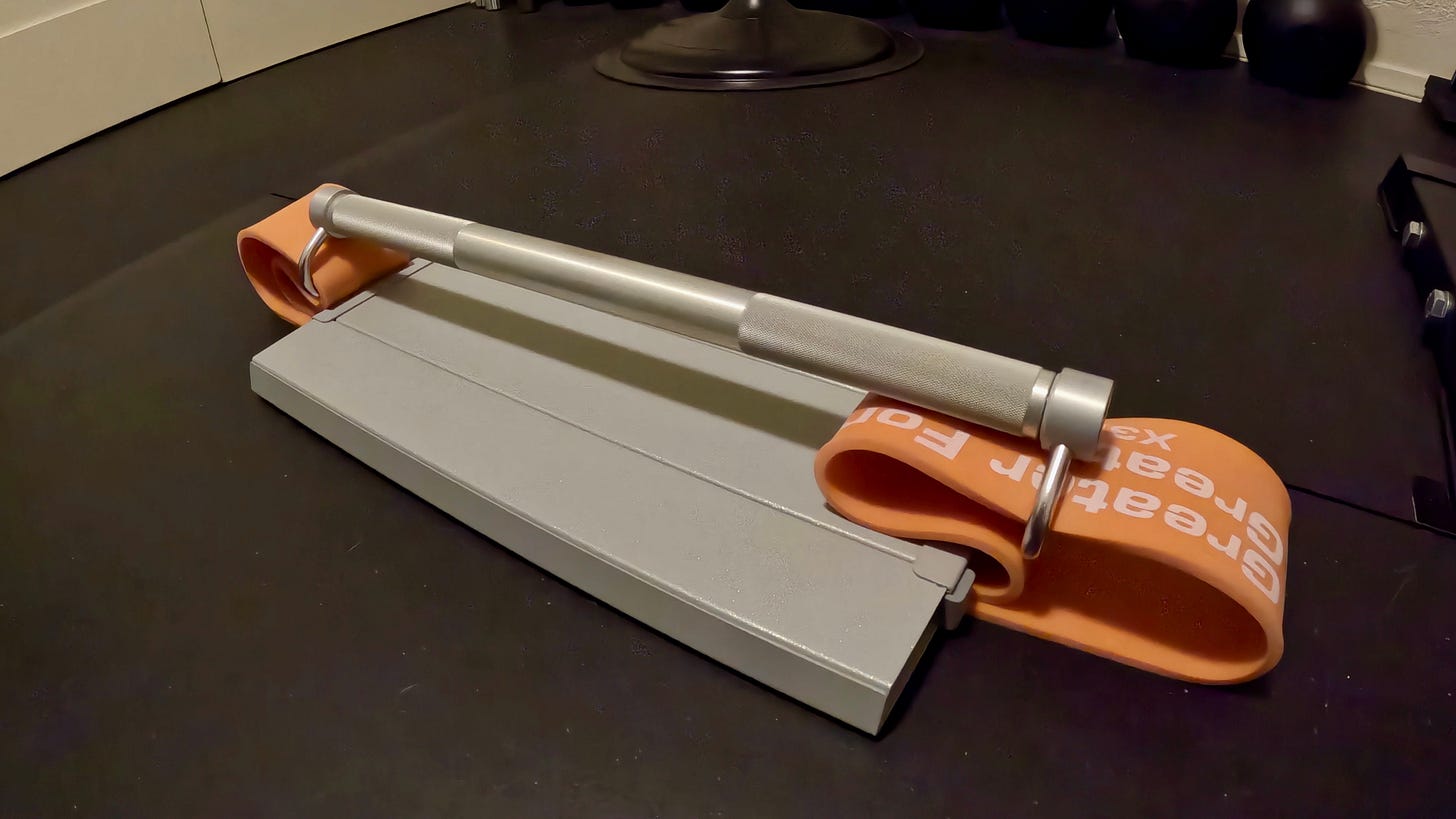

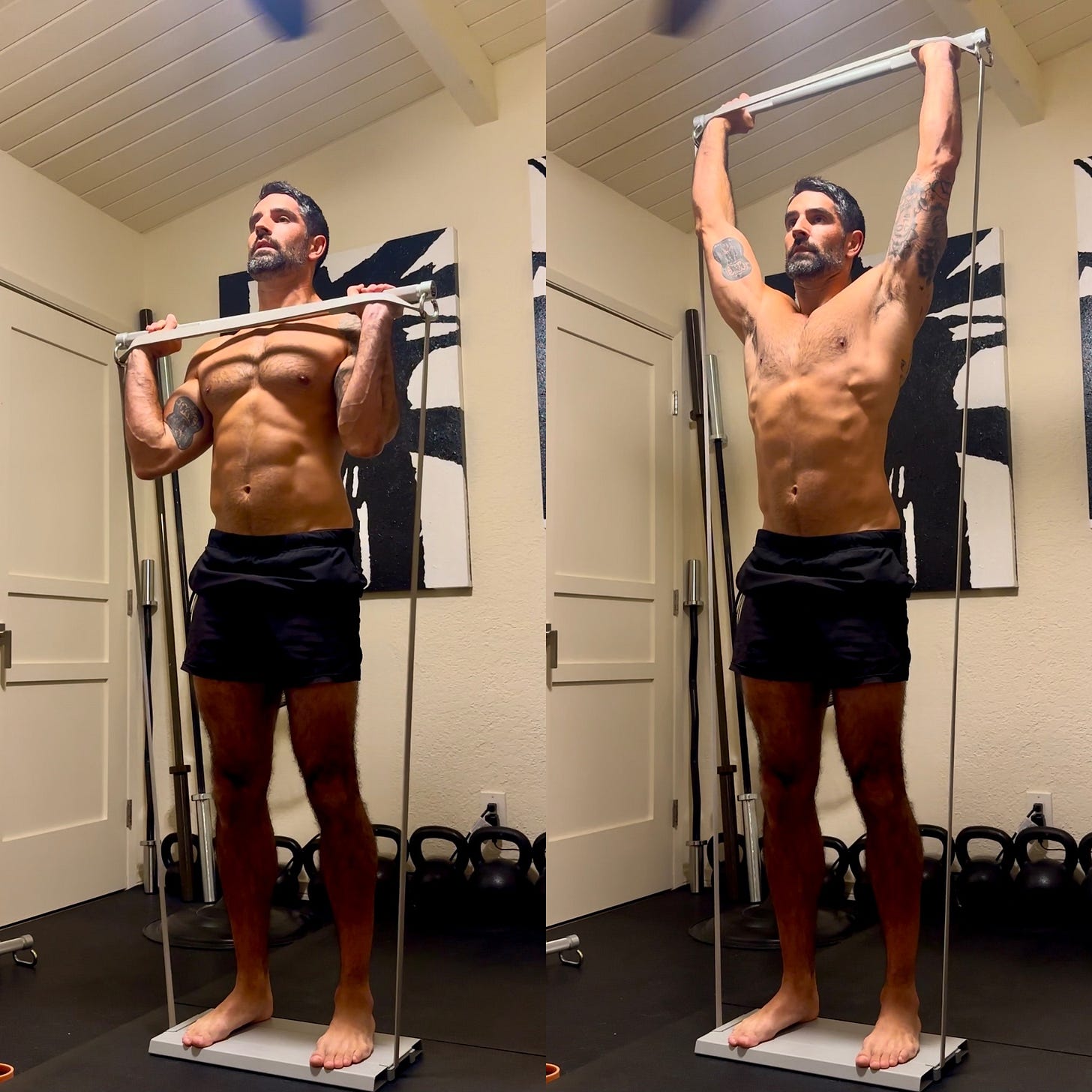
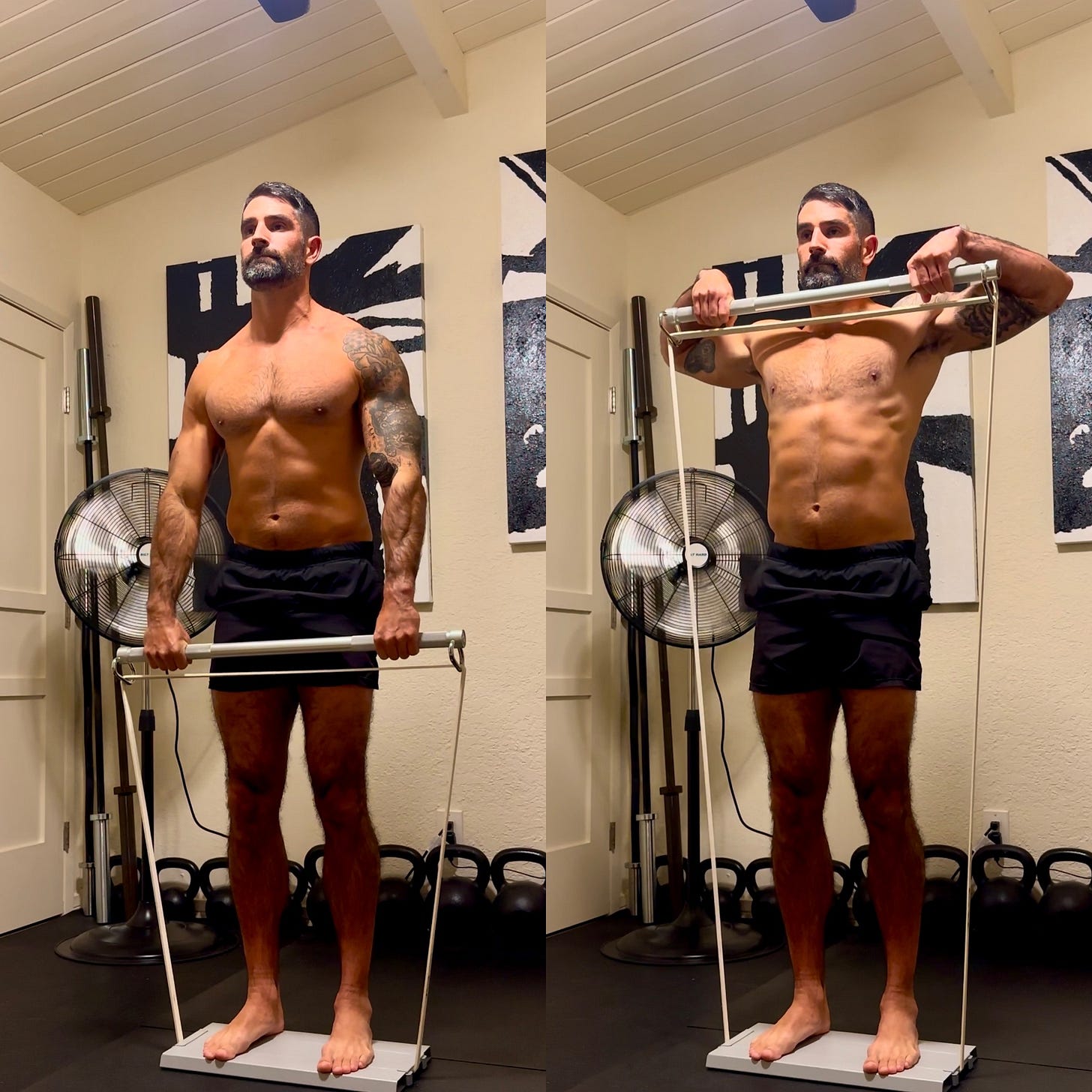
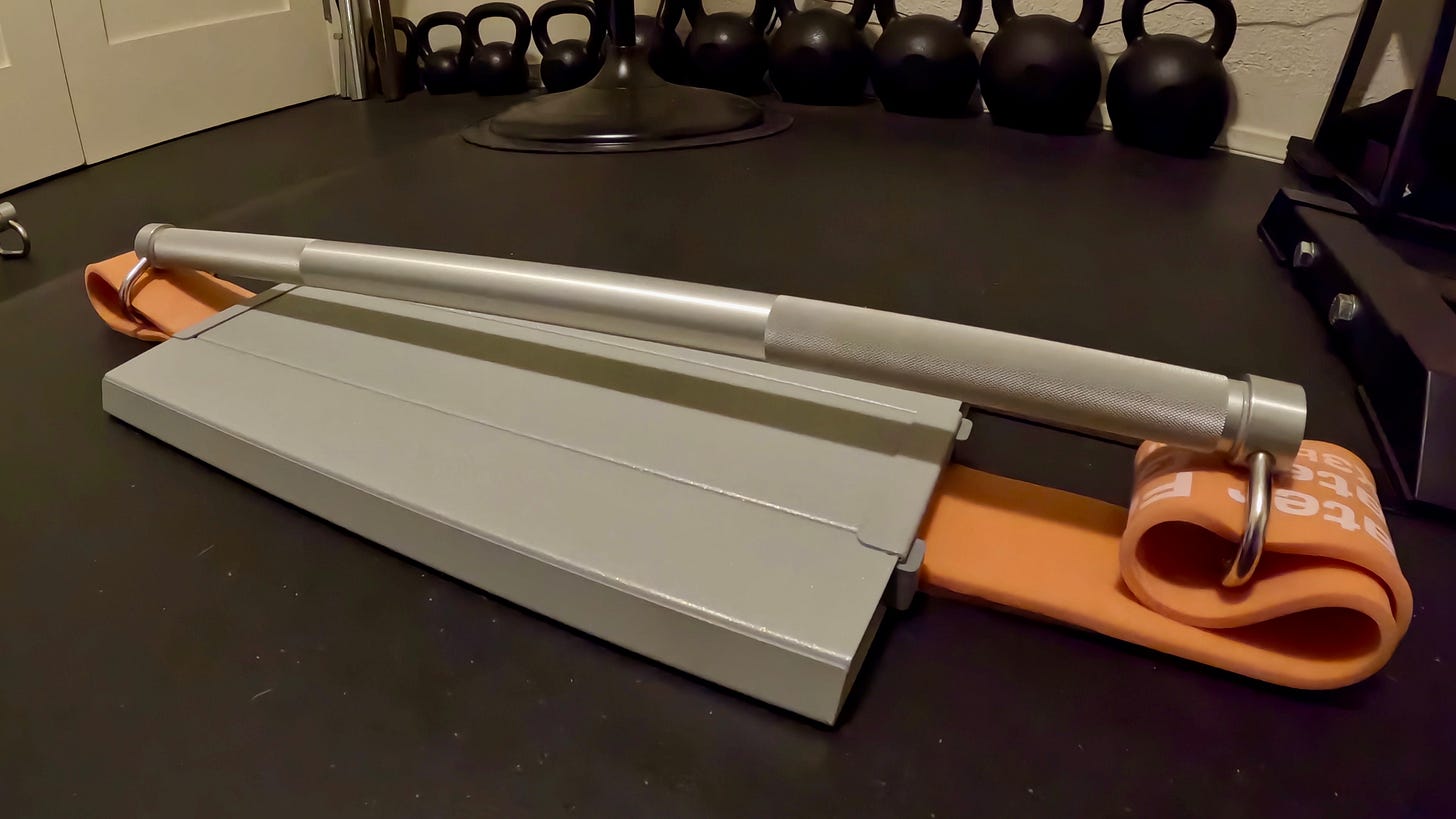
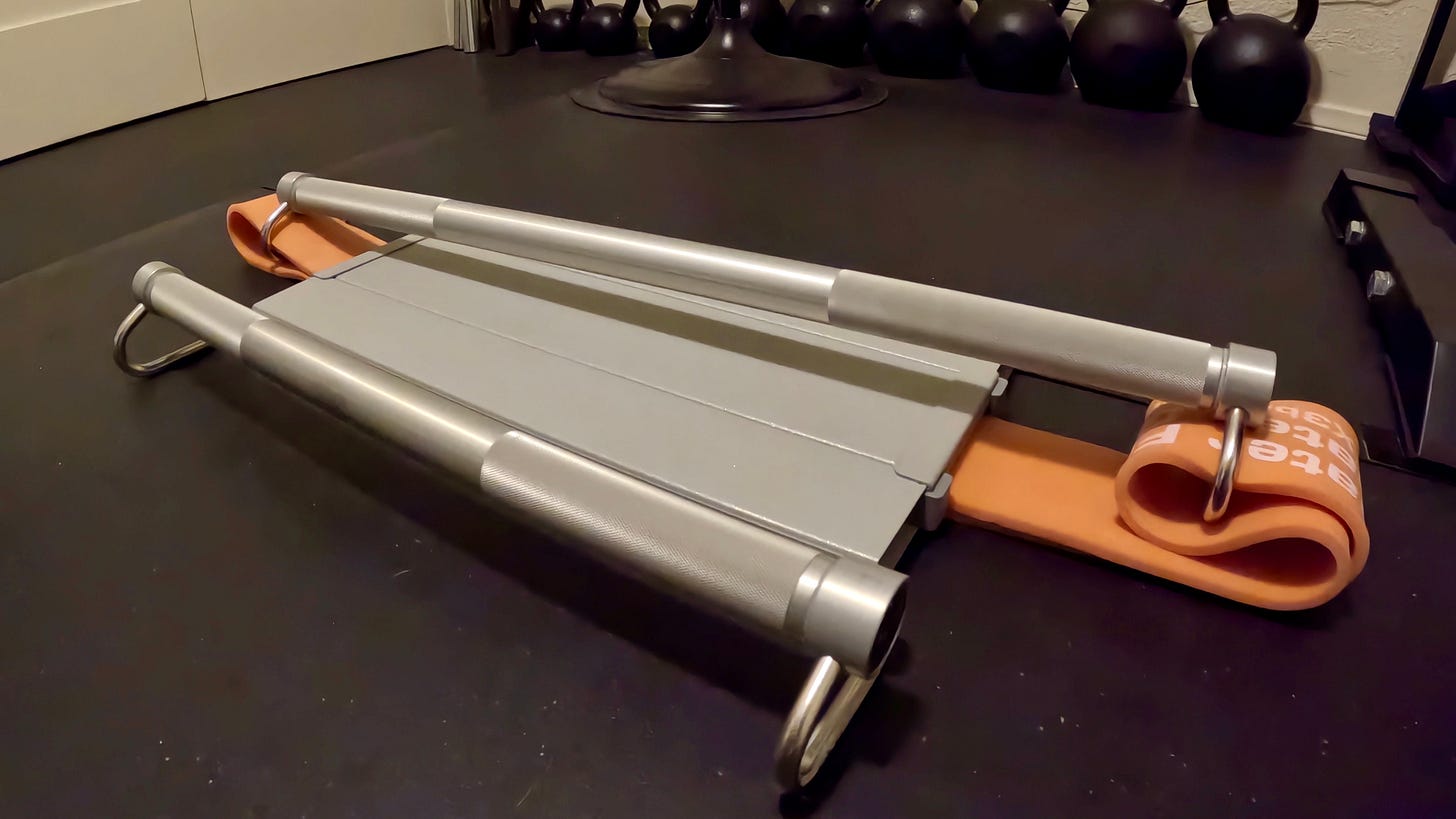
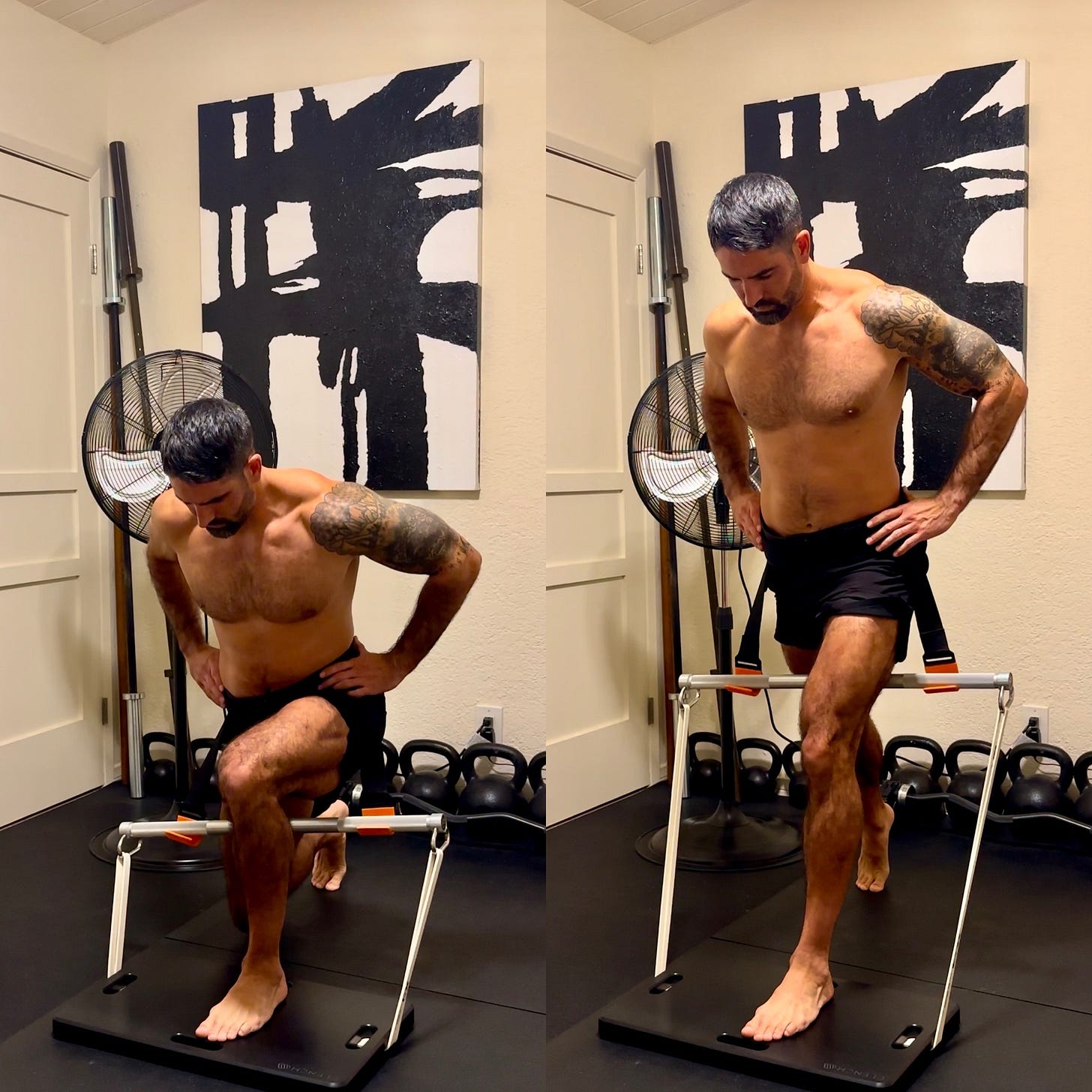

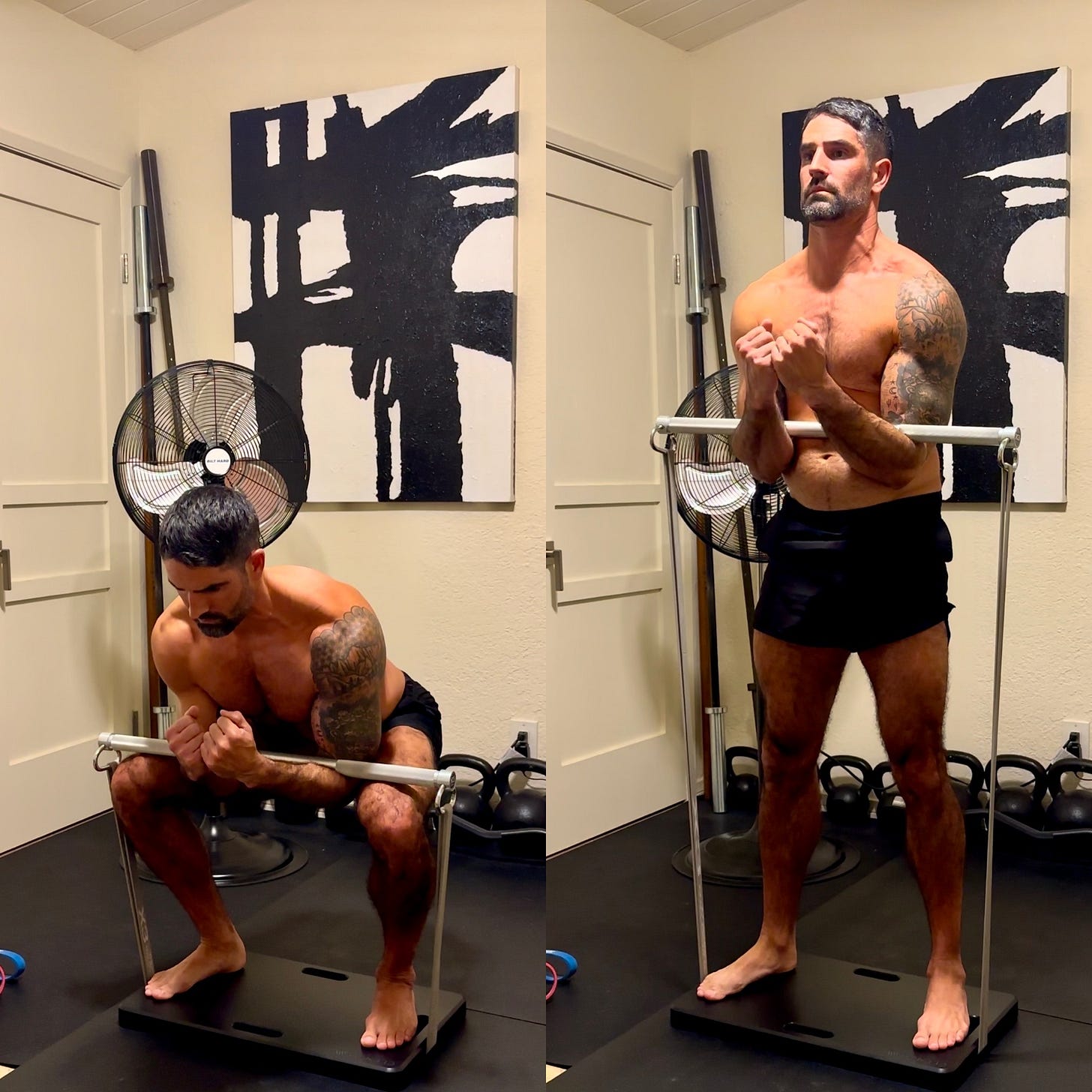
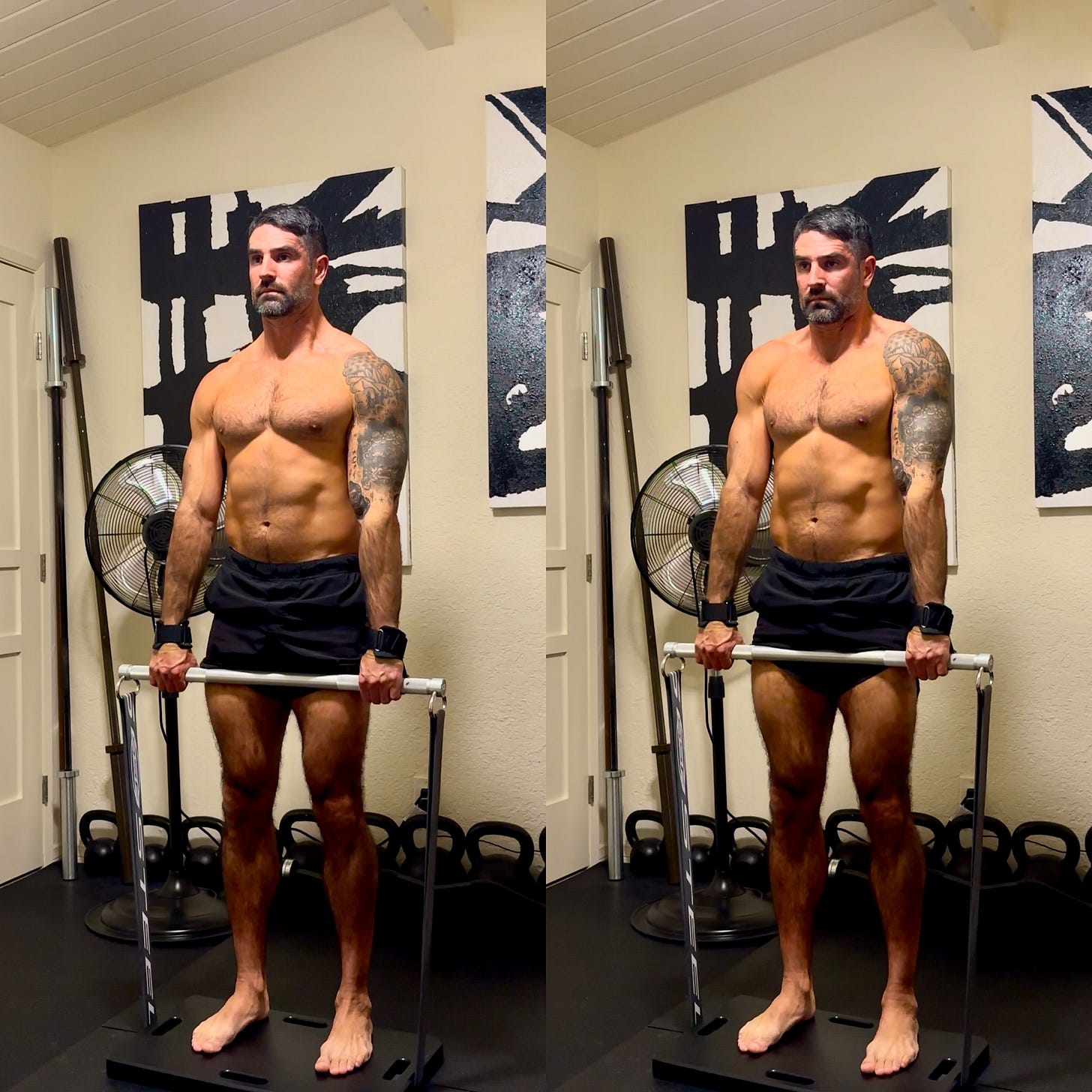
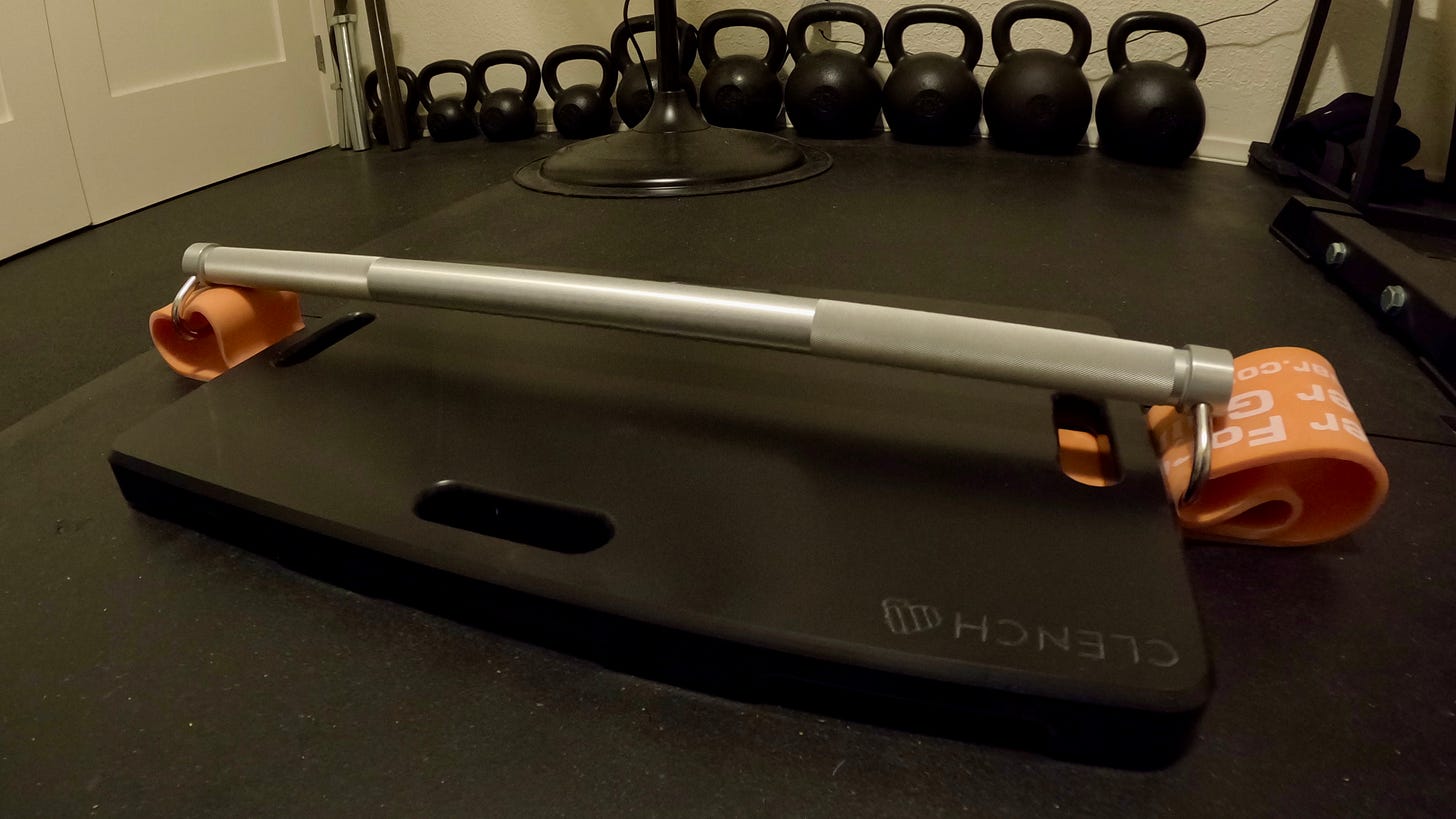


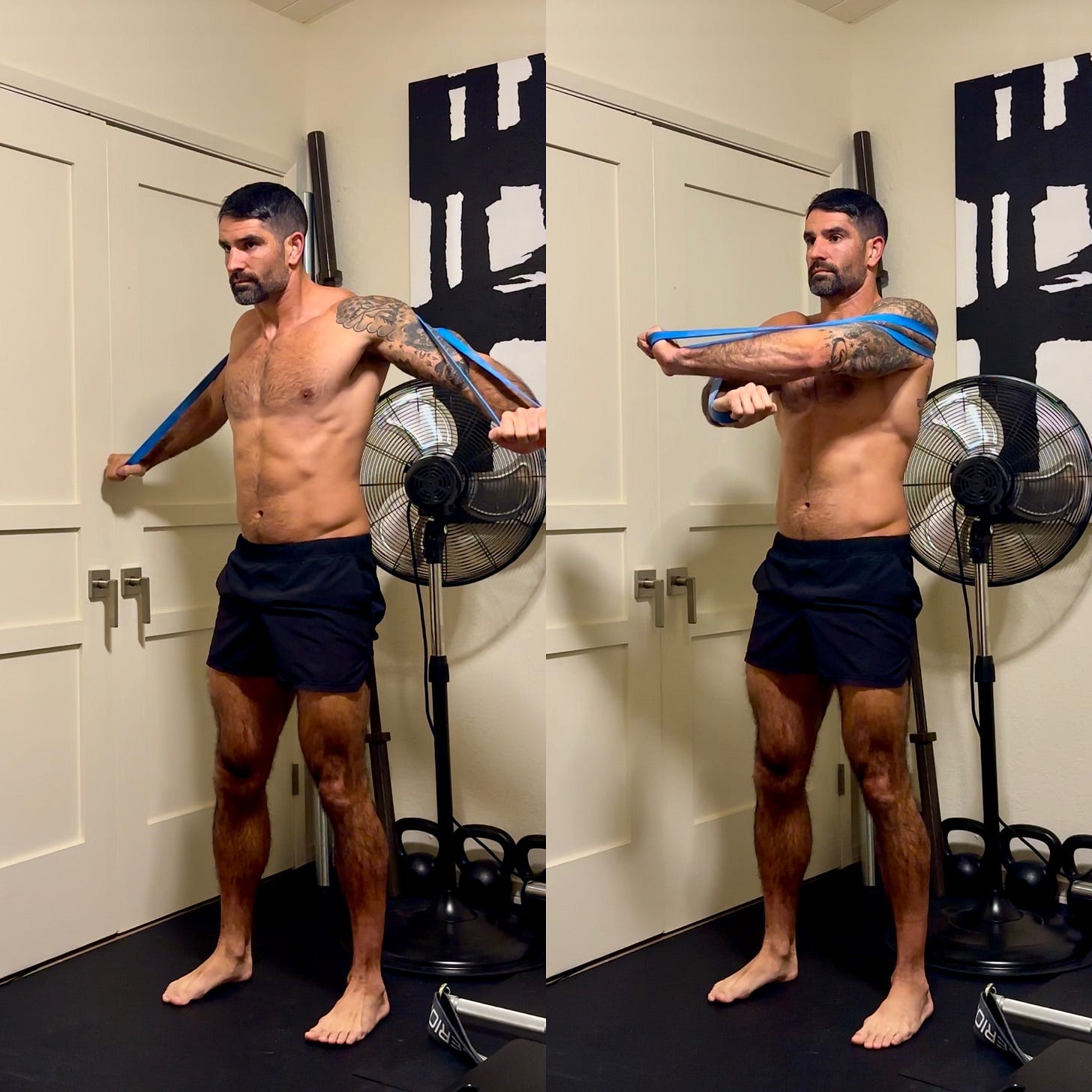
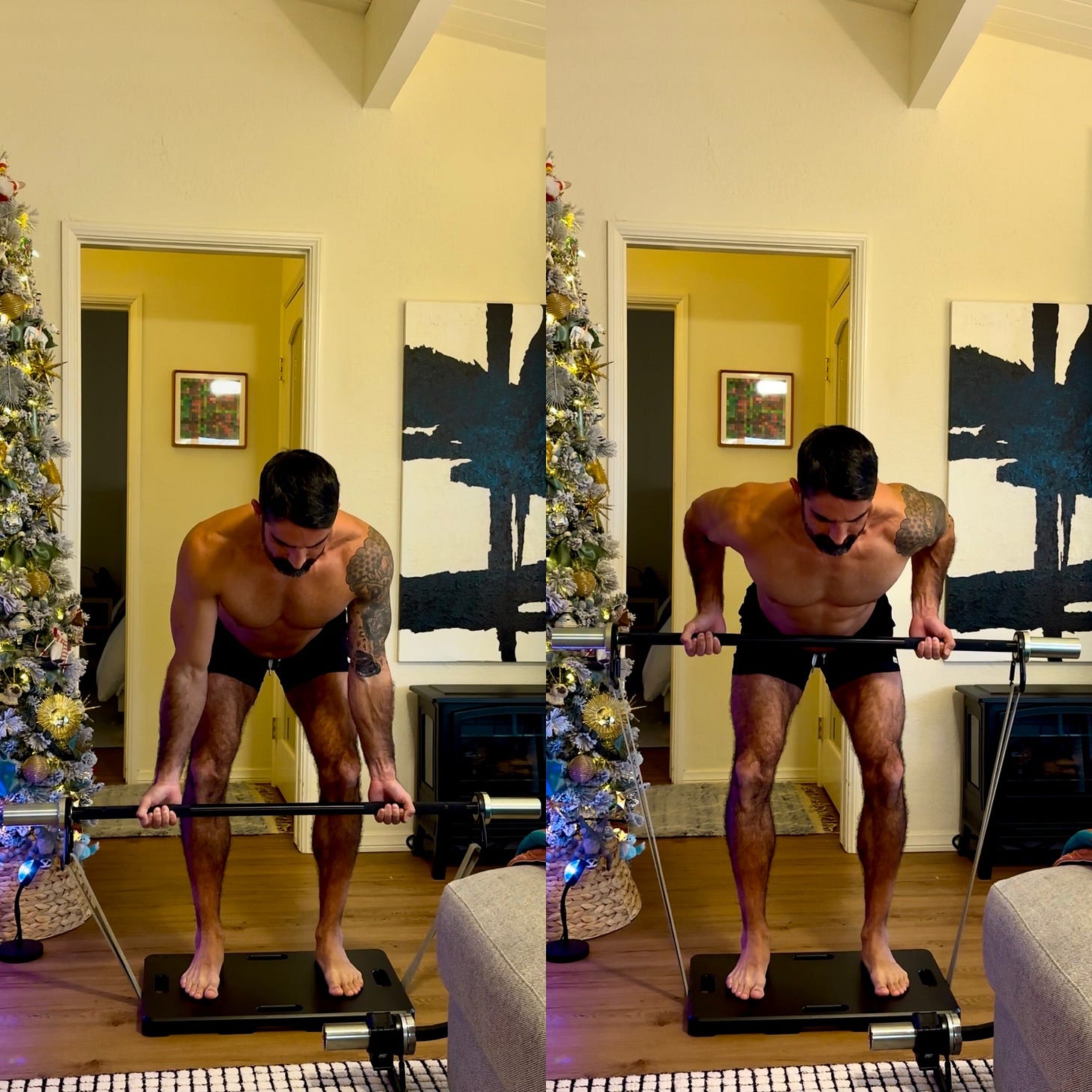
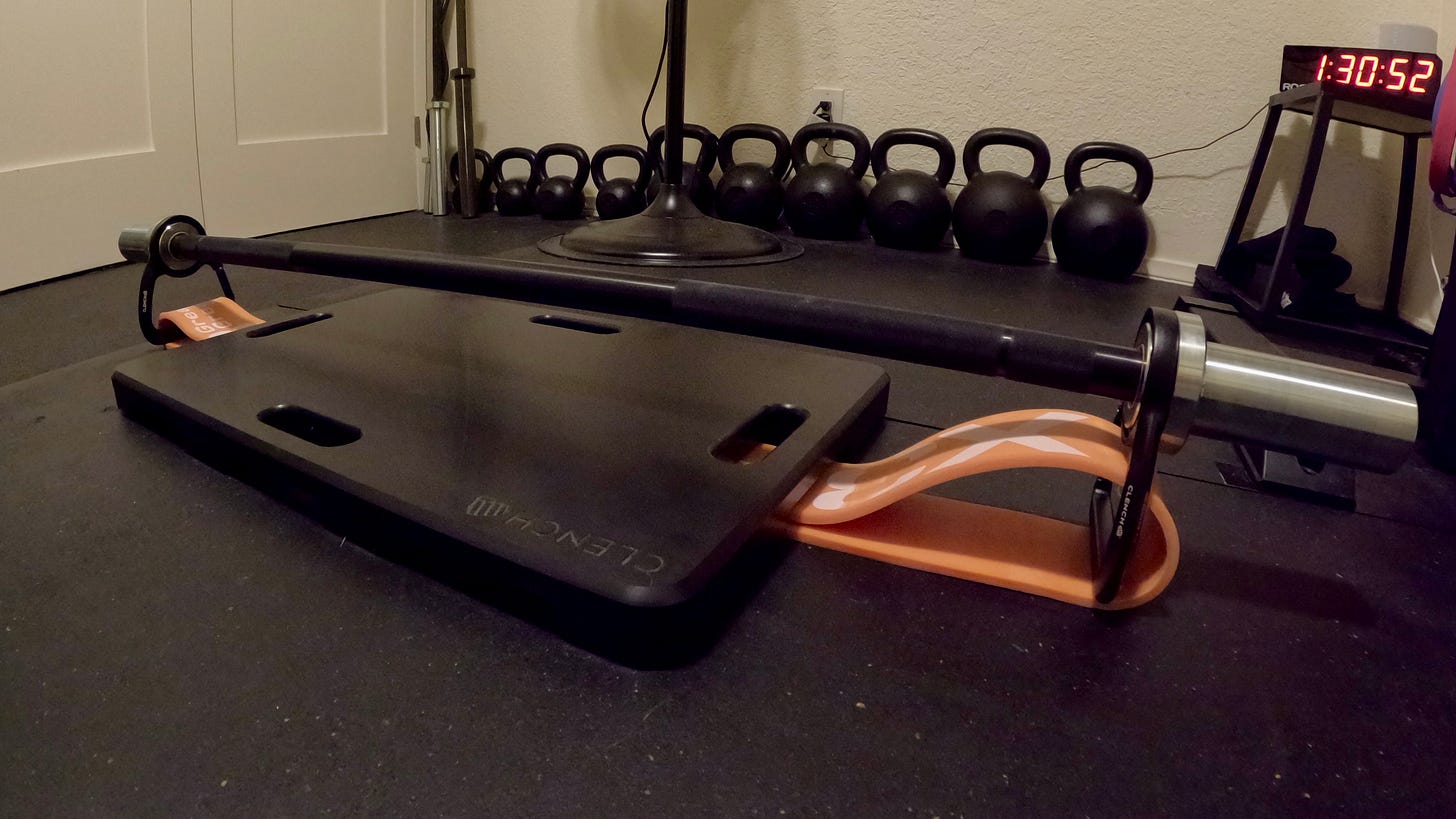
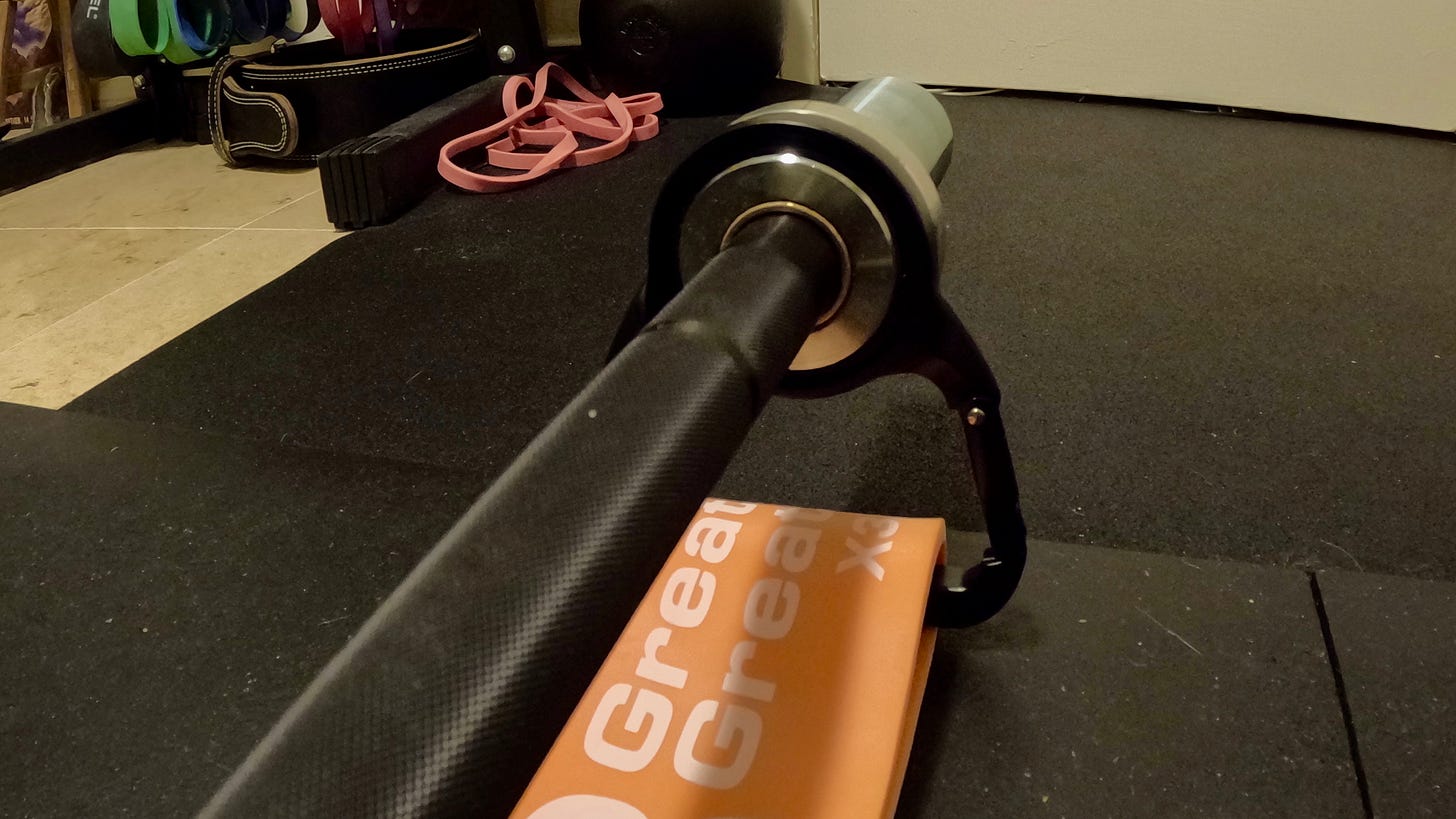

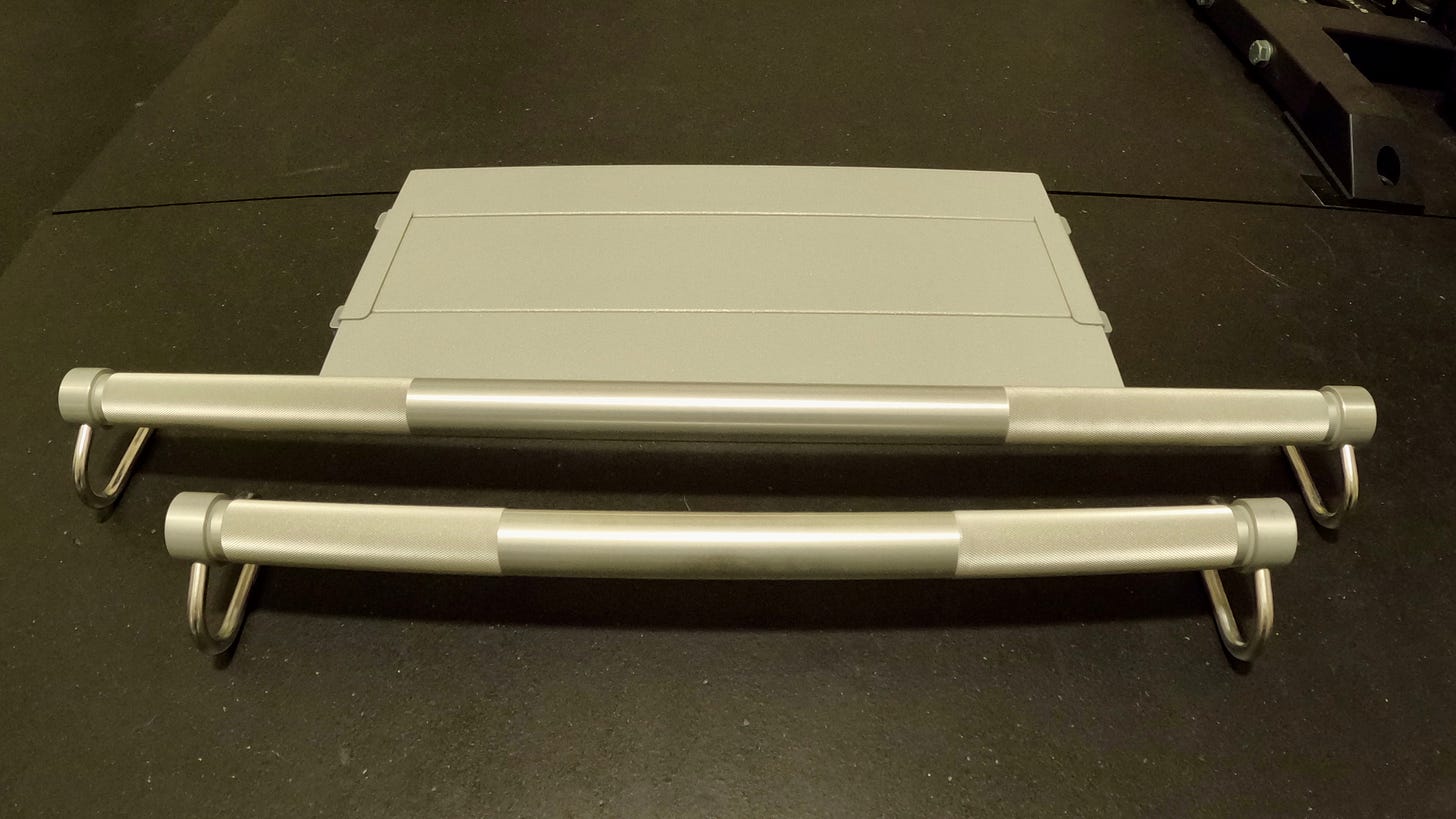


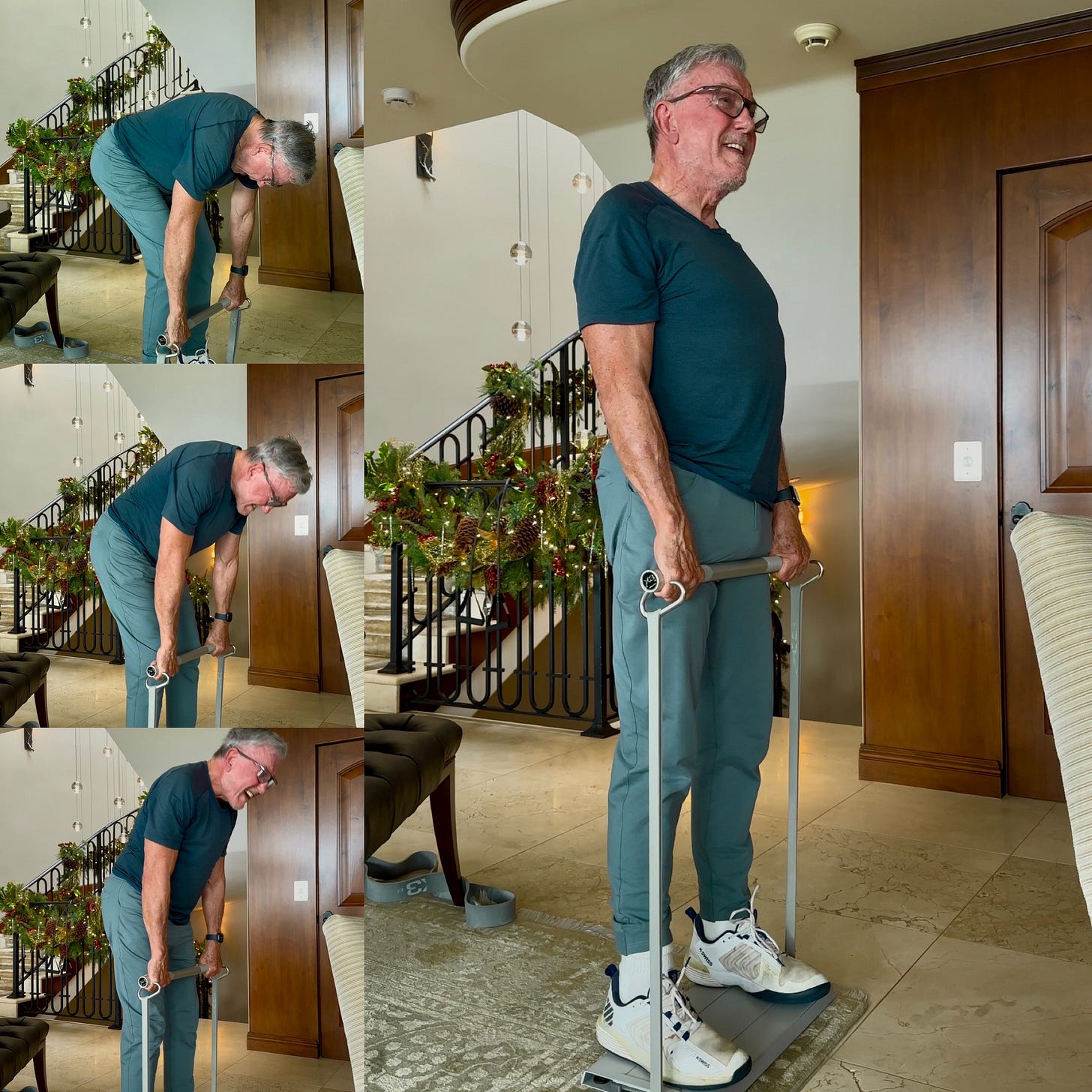
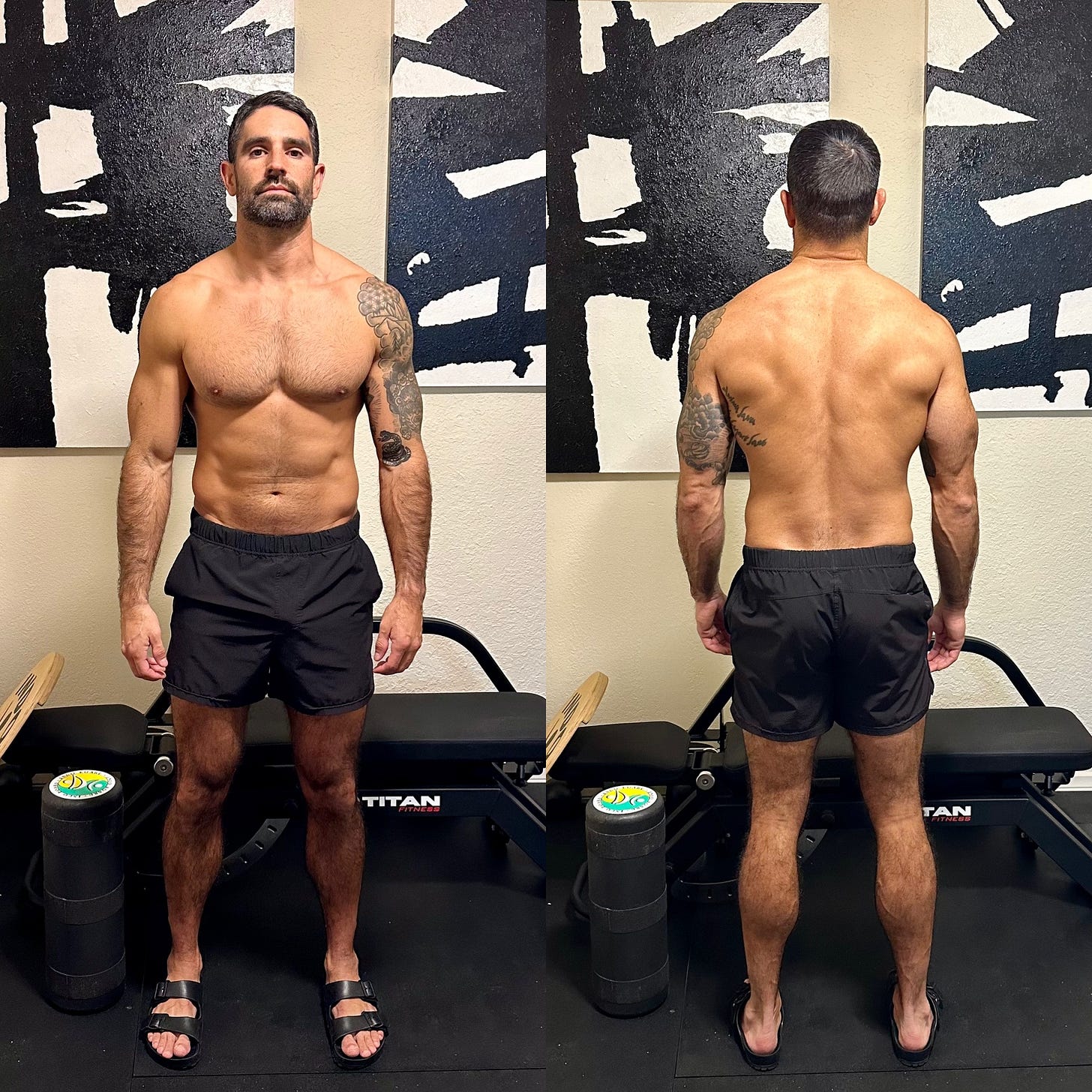
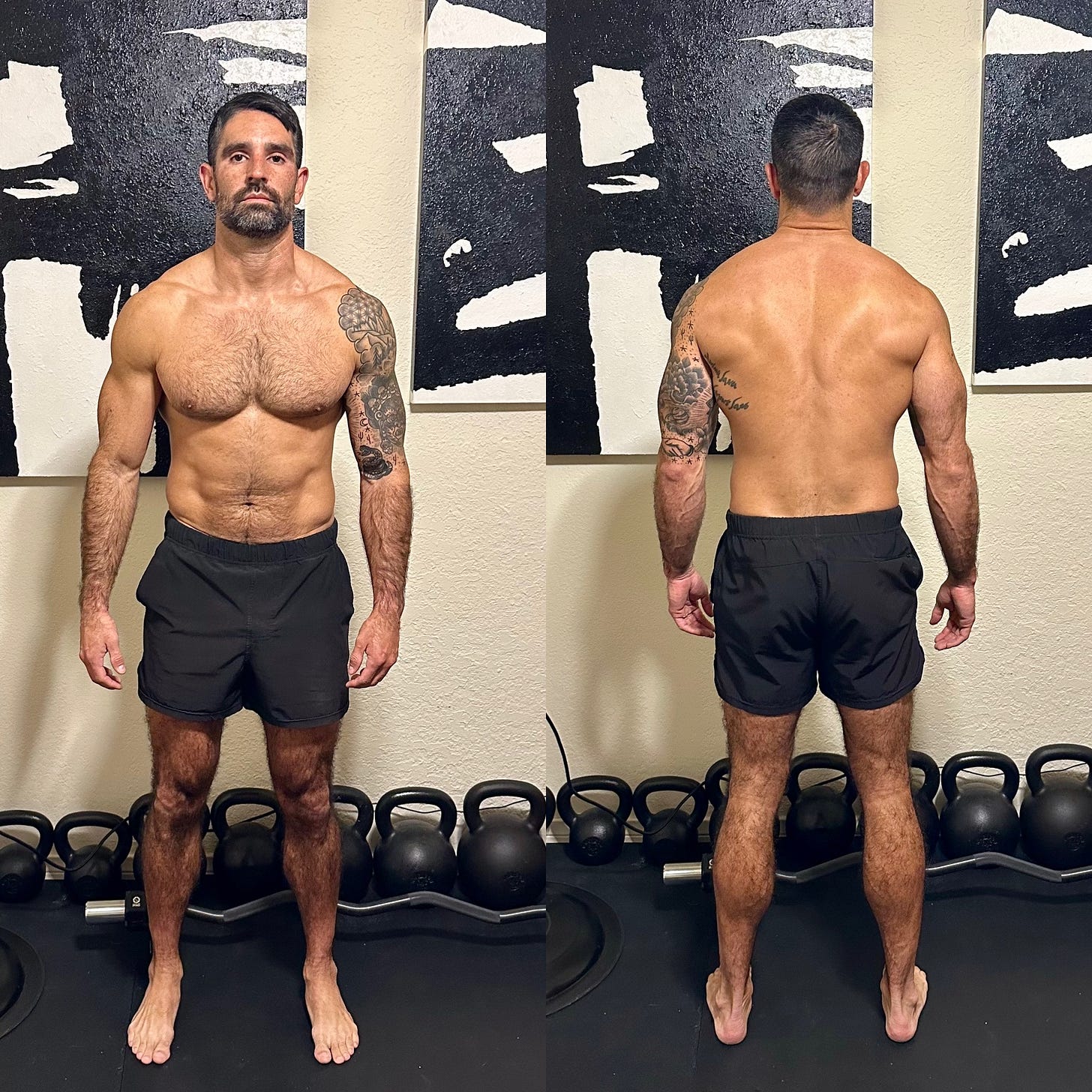

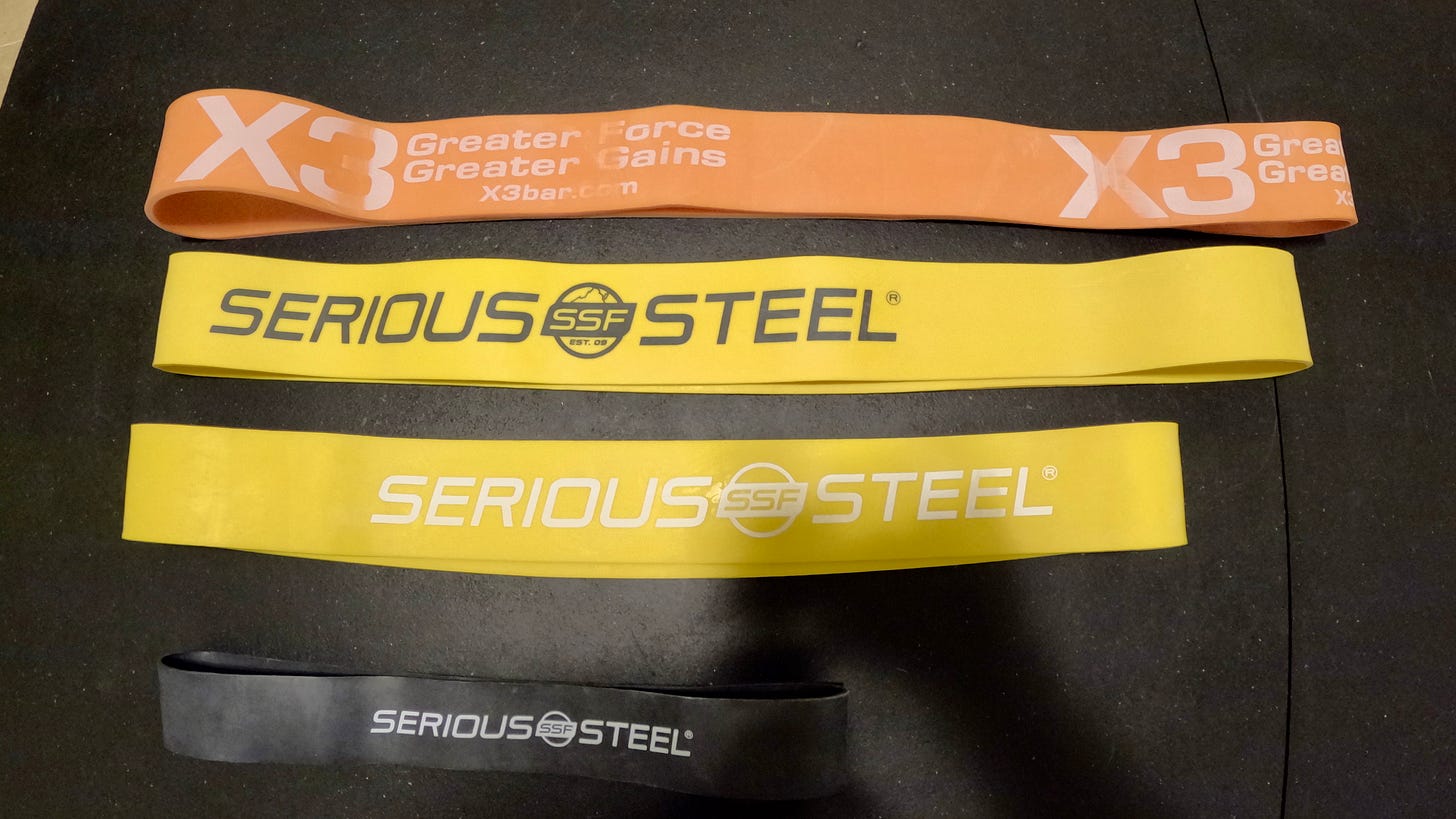
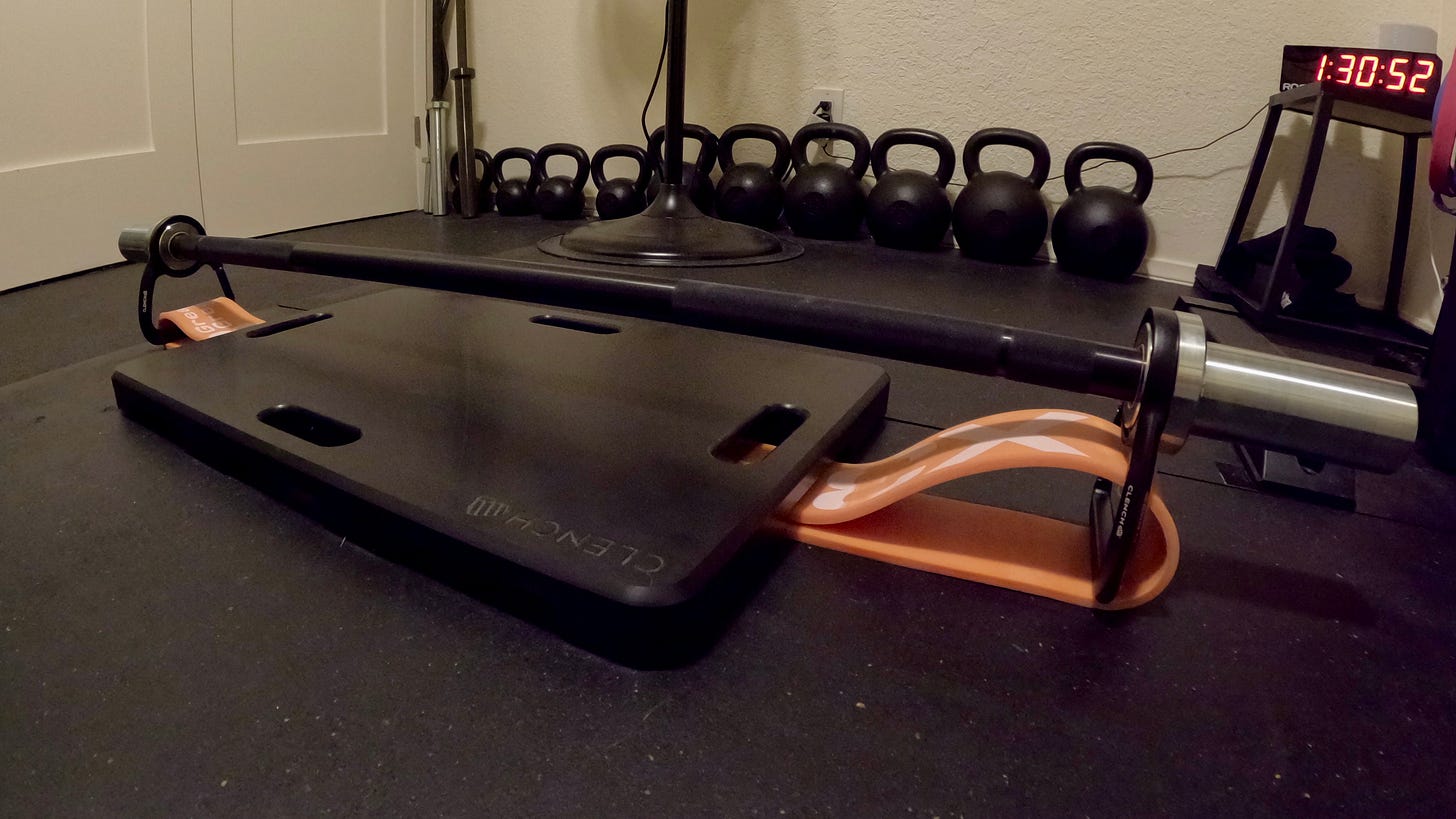
Thanks John for the detailed write up. Interesting stuff for this student of fitness and exercise. Happy New Year!